Slovenia Visit 2024
In the plane on our way

Map of Slovenia, visited places and route
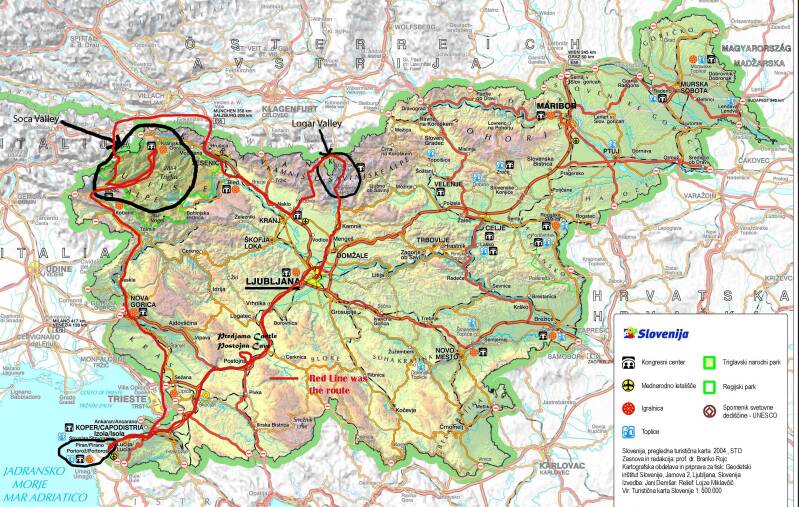
Slovenia (Republic of Slovenia) is a country in southern Central Europe part of the Balkans. Slovenia is bordered by Italy to the west, Austria to the north, Hungary to the northeast, Croatia to the southeast and a short coast line within the Adriatic Sea to the southwest. It is mountainous and forested with a population of 2.1 million. In size it is like New Jersey and half the size of Switzerland. We were met by warm humid weather, higher than usual for this area. Slovenia was historically a crossroads, having been under the control of many different states: the Roman Empire, the Kingdom of Hungary, the Republic of Venice, Napoleon's First French Empire and the Austro-Hungarian Empire. After World War I it merged with Croatia and Serbia. It was occupied by Italy and Germany during World War II. Following that war it became part of Yugoslavia. In 1991, Slovenia became independent and remains so today. Slovenia is very progressive, democratic and a clean and friendly place to visit.
Ljubljana, Slovenia's capitol and largest city
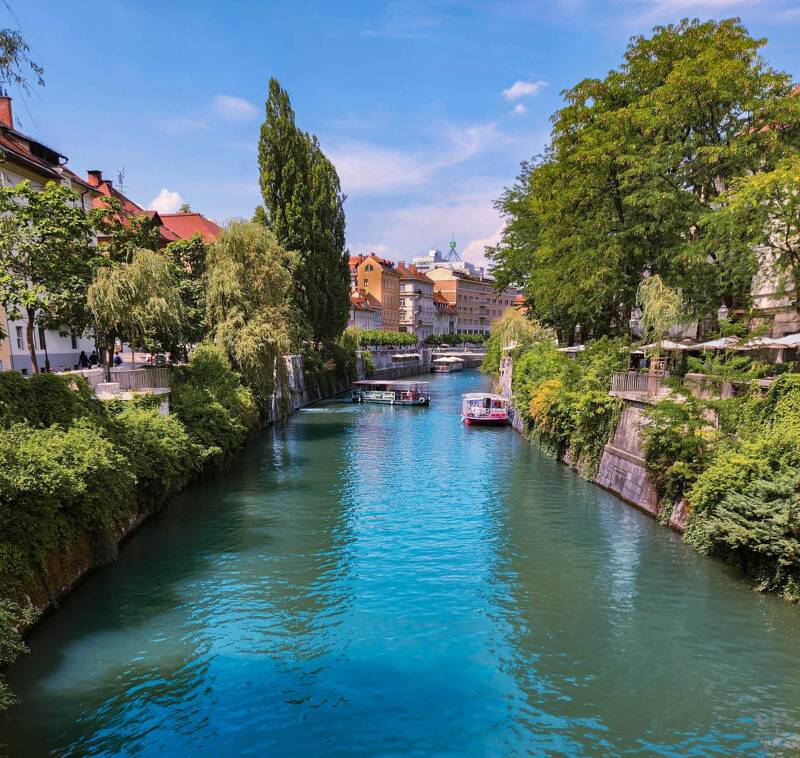
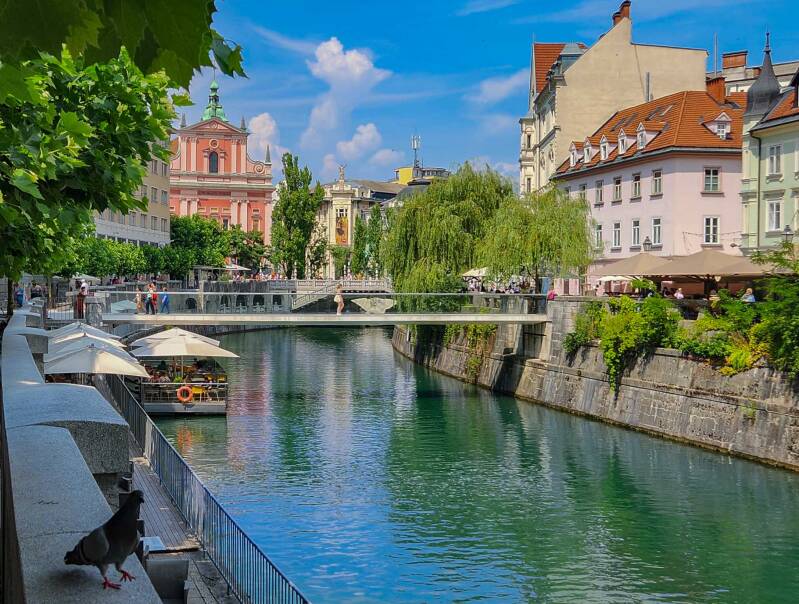
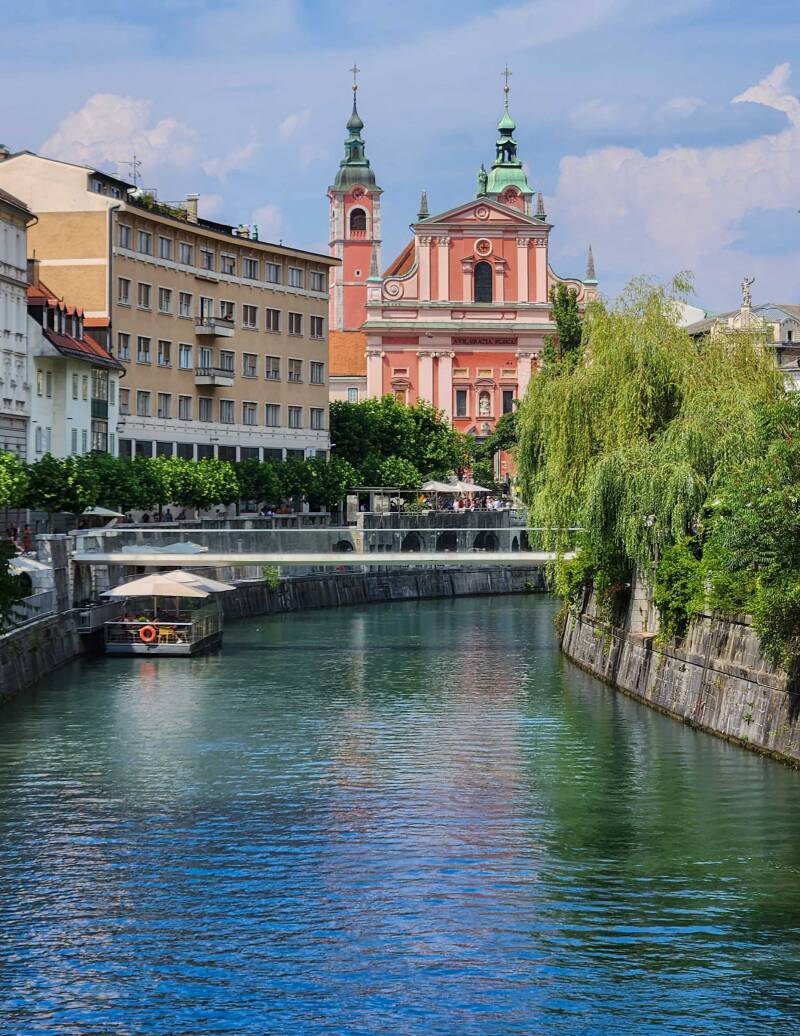
The Ljubljanica River flows thru the city center.
A model of Ljubljana's old part and city center, Ljubljanica River arcs around the Castle located on a prominent hill.
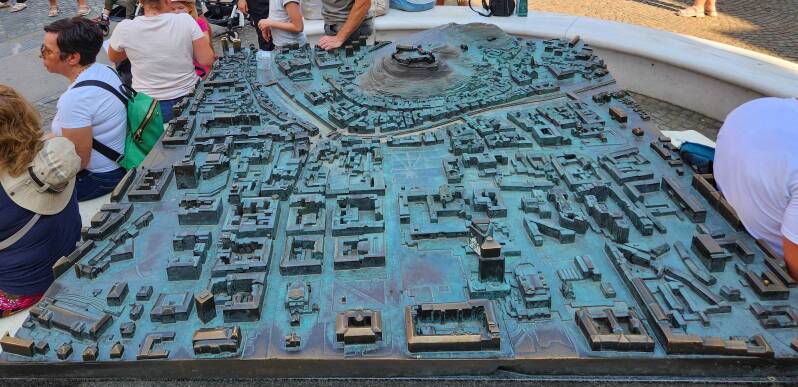
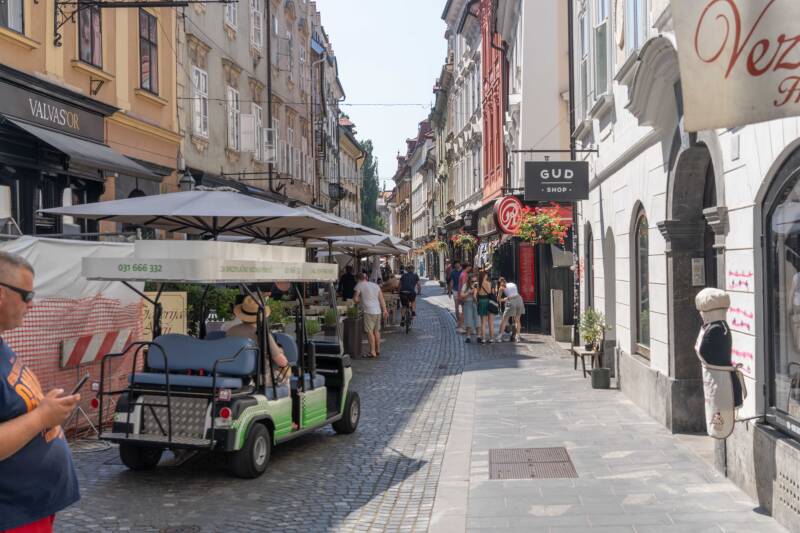
The city center is also the old part of Ljubljana. Except for carts that provide free transportation, the area is pedestrians only.
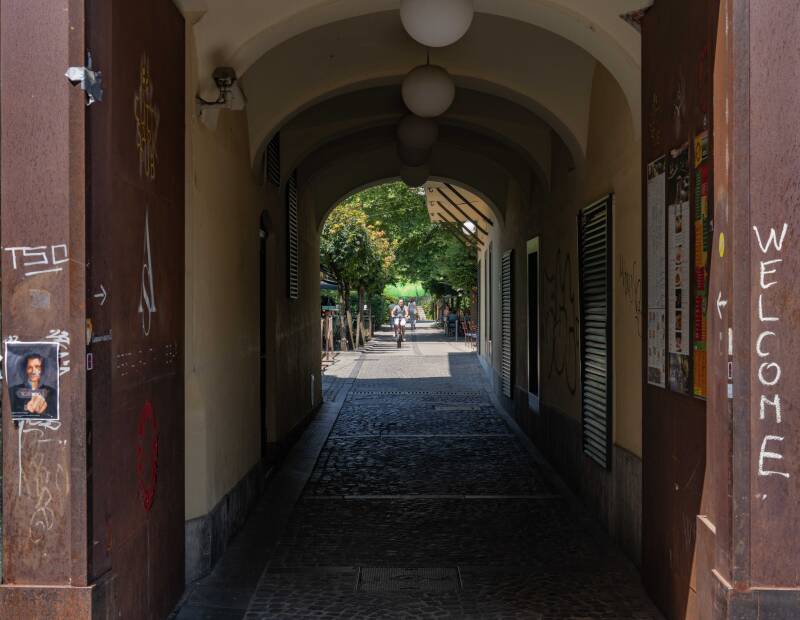
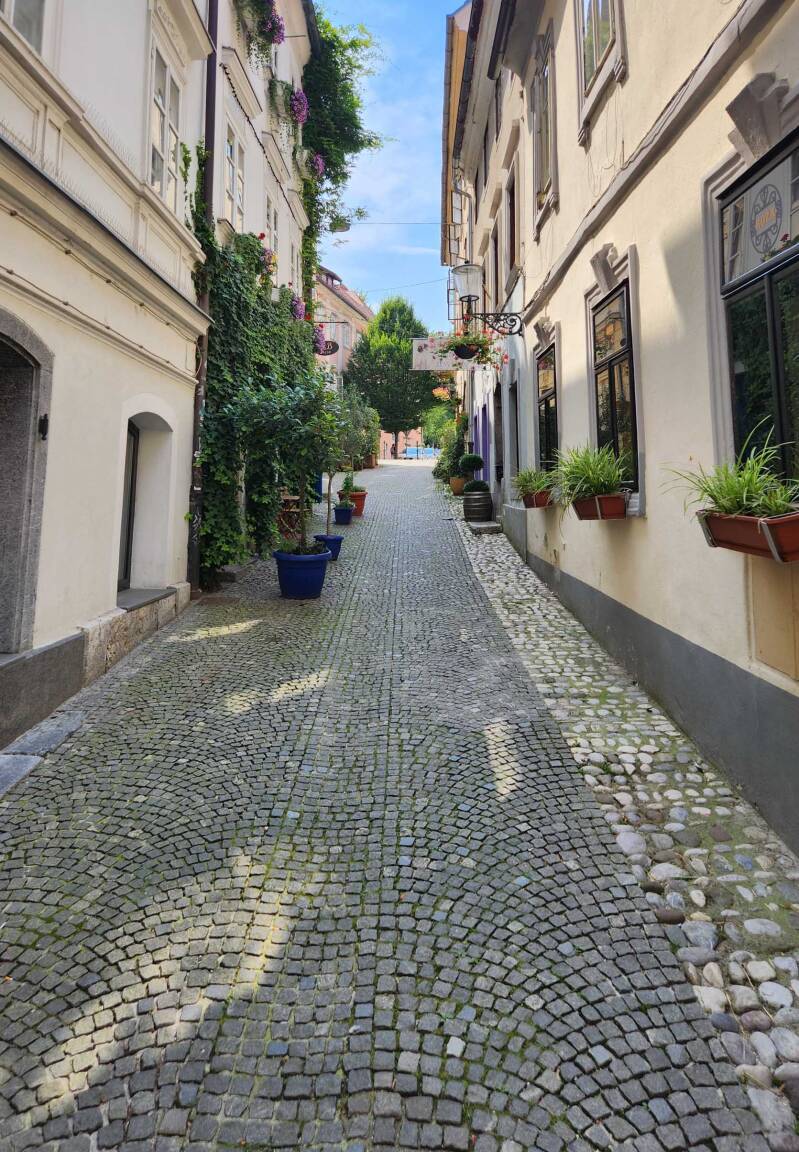
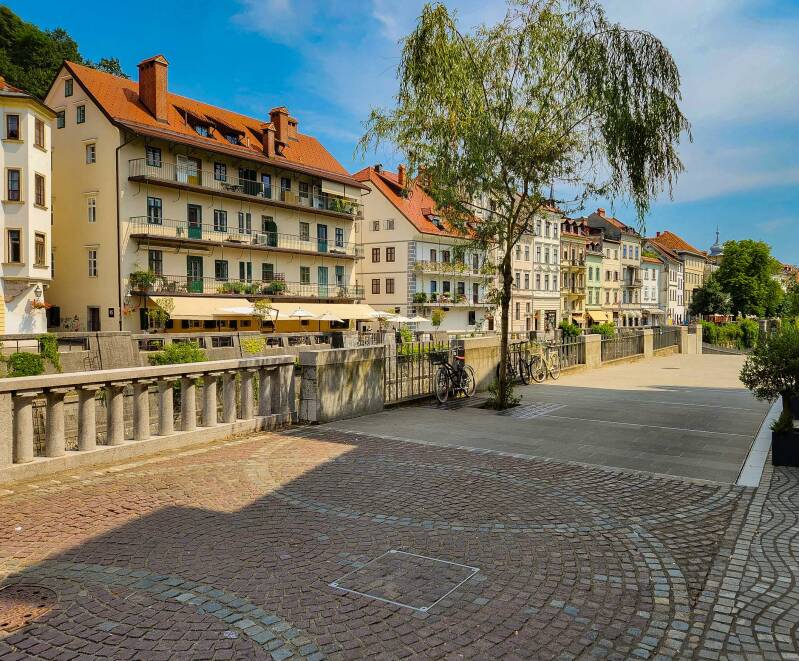
Both sides of the river have walkways, lined with restaurants, shops and apartments.
The photos show the perfectly clean and attractive city.
Over the last decade Ljubljana has undergone a program remodeling the derelict buildings. This is partly funded by the city.
On the right is an building not yet repaired compared to the buildings on the left that has been updated.
Above the building is Ljubljana Castle.
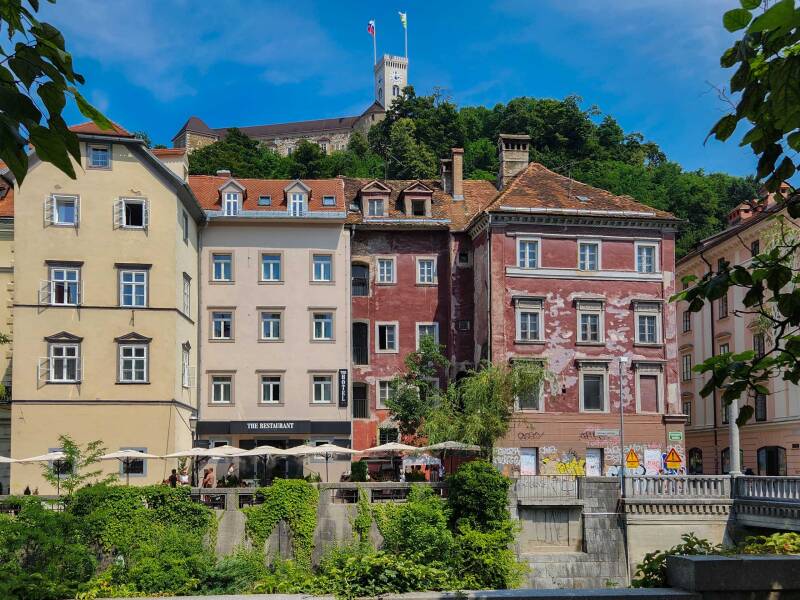
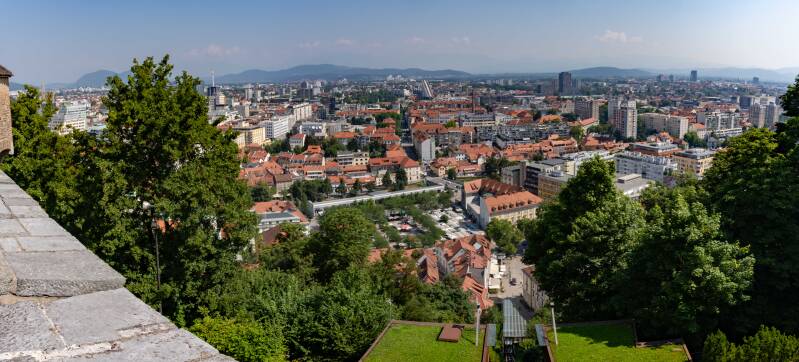
View of the city from the castle
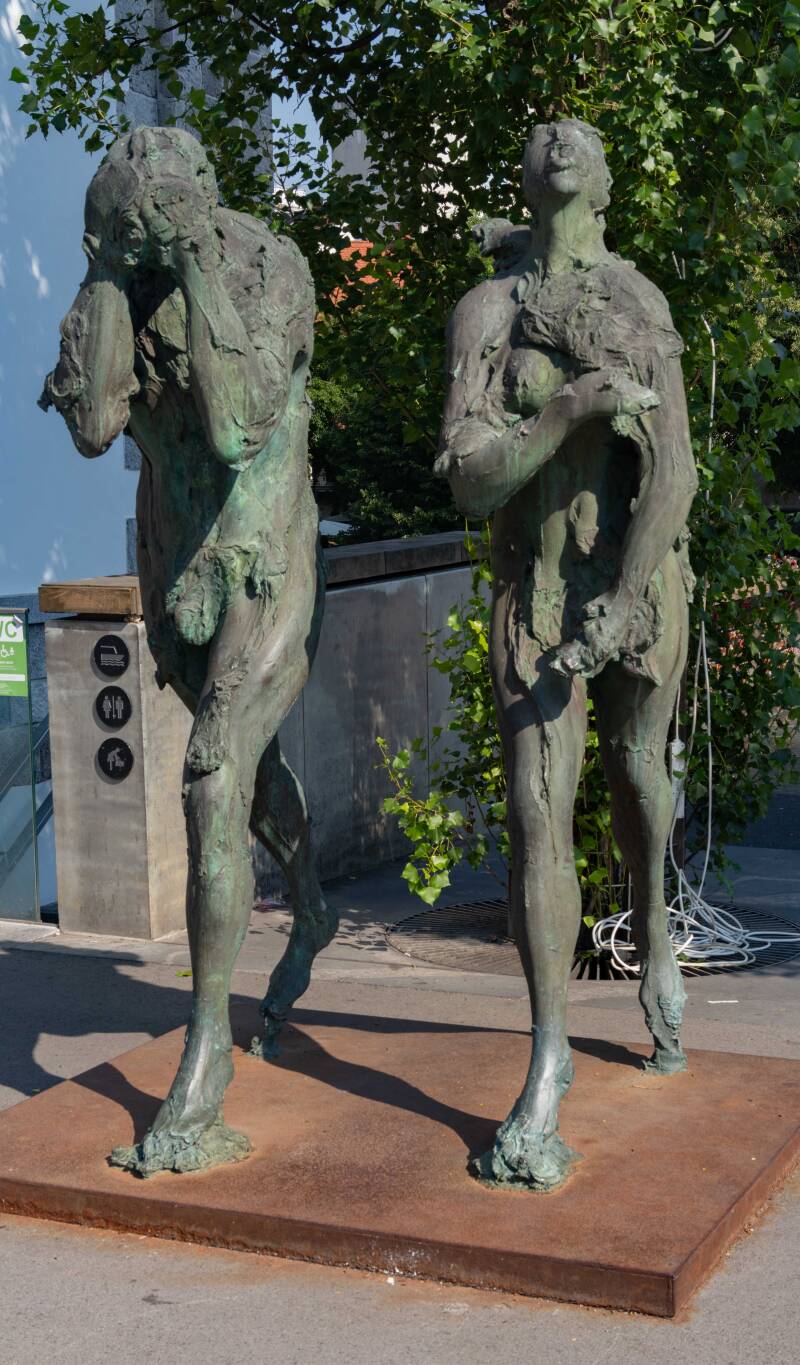
Galerjia Emporiumb (Galleria Emporium), oldest department store in Slovenia (1902)
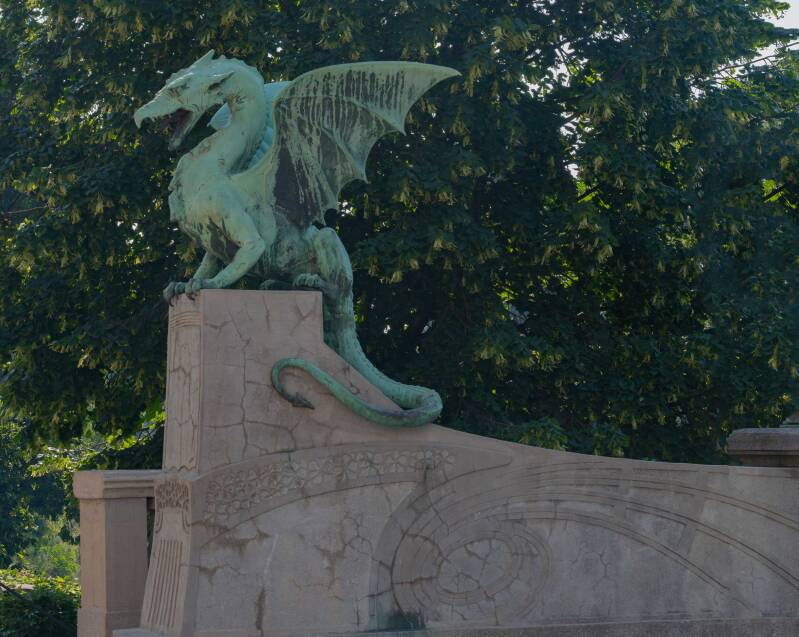
Dragon and Adam and Eve Statue on Dragon Bridge over the Ljubljanica River

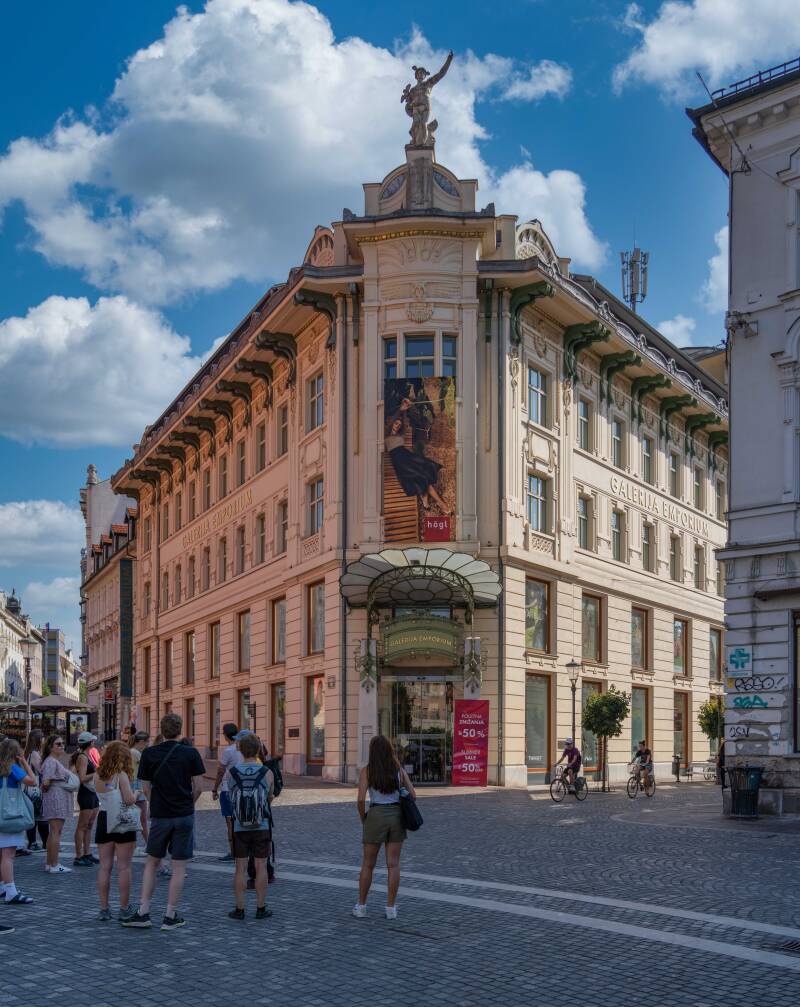
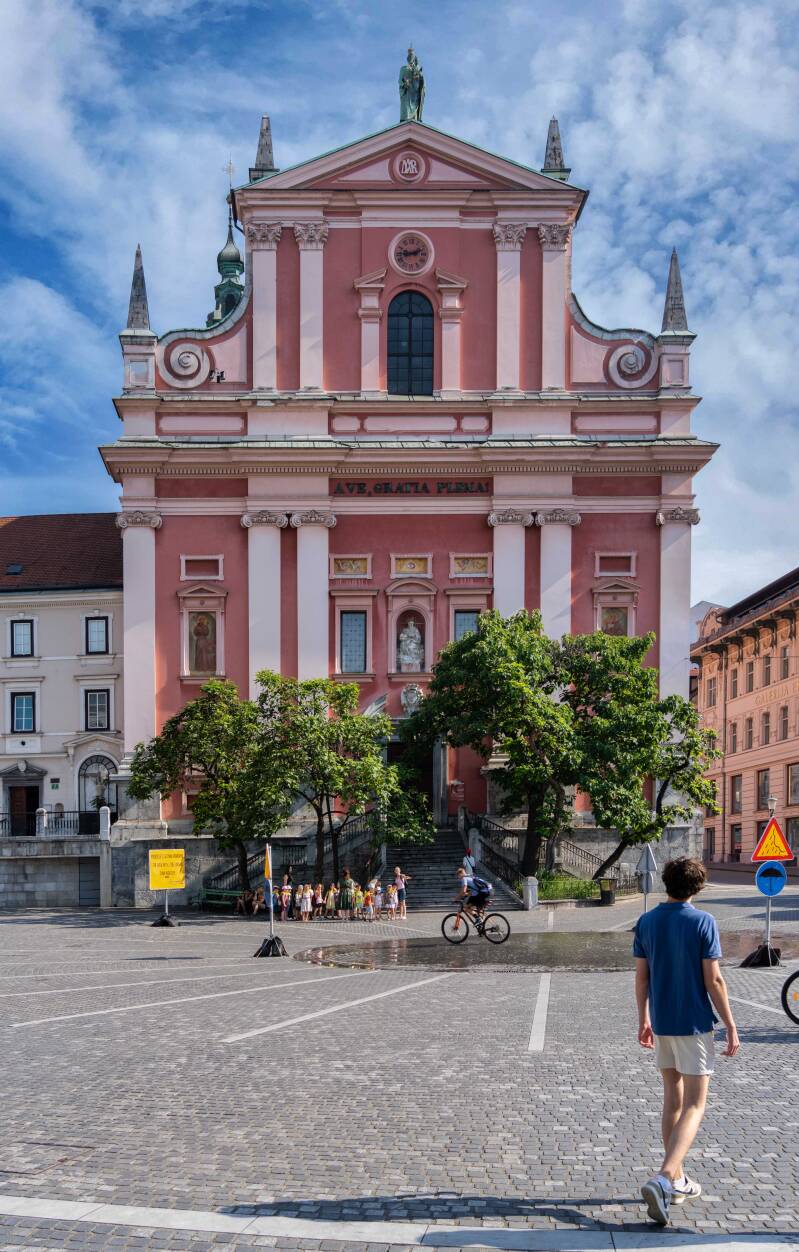
Franciscan Church of the Annunciation located on the Preseren Square in the center of Ljubljana, next to Triple Bridge. The church was built between 1646 and 1660. Slovenia's national religion is Roman Catholic.
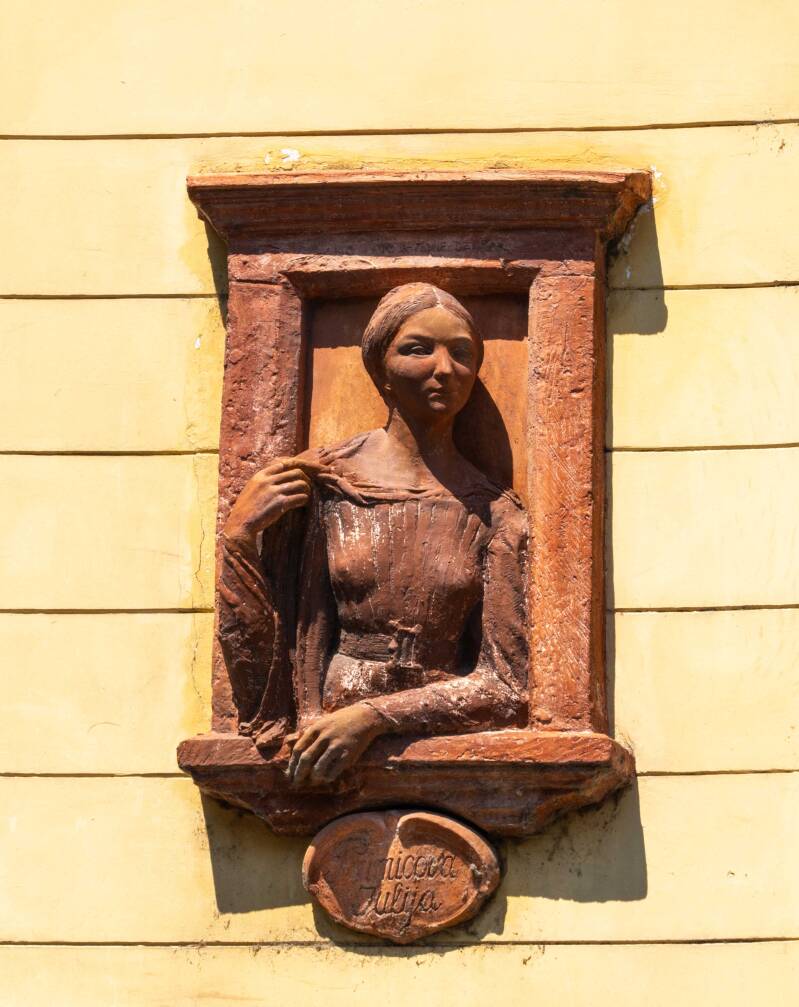

The Triple Bridge in Ljubljana, Slovenia, was designed by the renowned architect Jože Plečnik. Triple Bridge is in the center of Ljubljana. Three converging bridges over the Ljubljanica River lead from the medieval town to Preseren Square. It is on the UNESCO World Heritage List.
Preseren Statue in Preseren Square
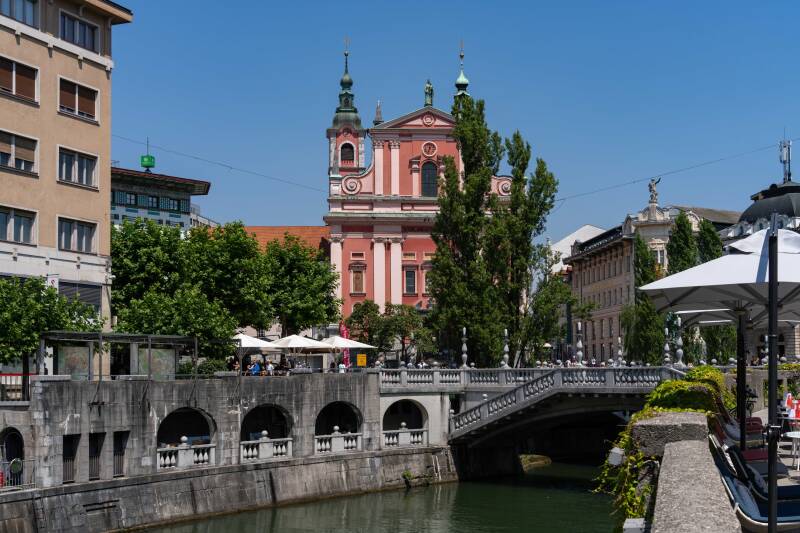
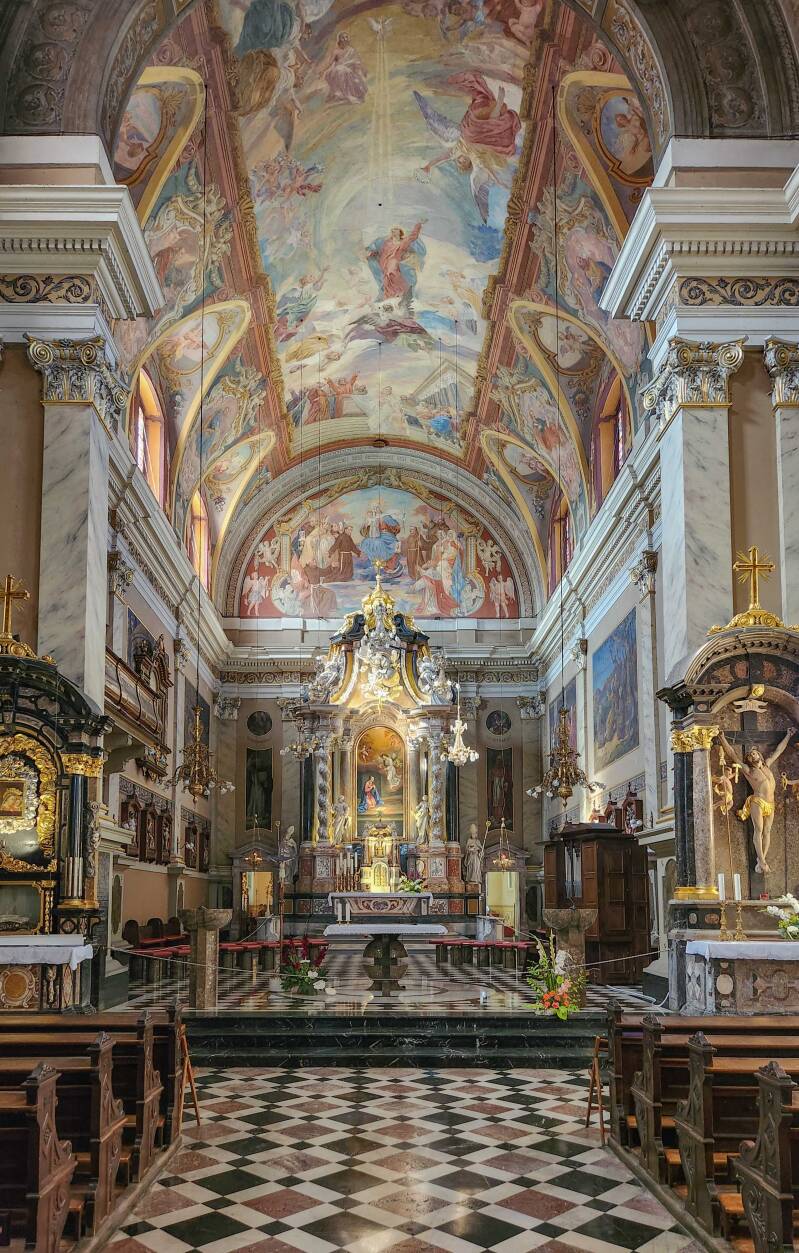
France Preseren was famous 19th century Slovenian Romantic Poet.
A stanza from his poem "Sonnets of Misfortune:"
O'er thee, Misfortune, I have ceased to wail,
I'll utter no reproaches any more.
Thank God, I'm used to griefs thou hast in store
And to the sufferings in life's strong jail.
The wall statue to the left is of Julia Primic. She was the unrequited love of France Preseren. Did that have something to do with his writing the poem above?

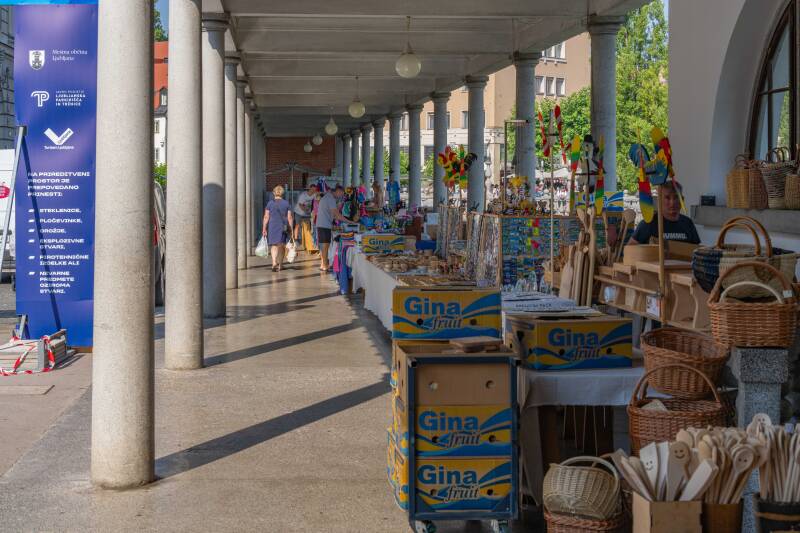
Ljubljana Central Market
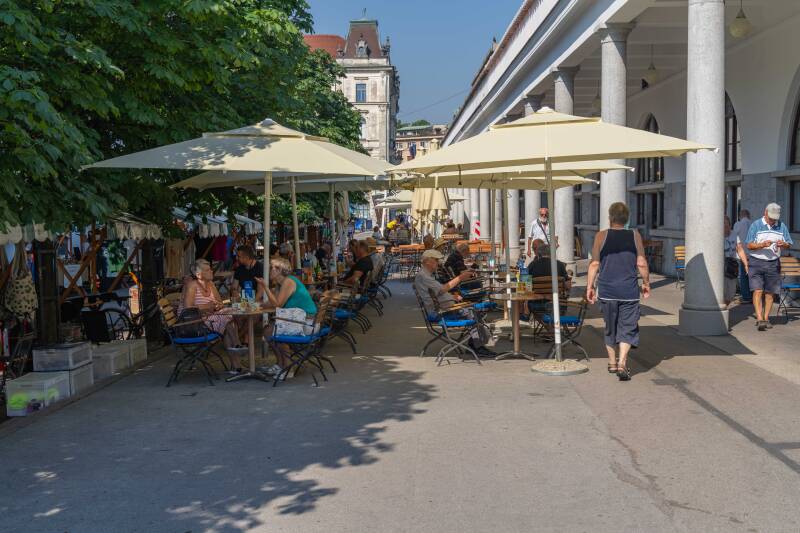

Ljubljana Castle central courtyard Ljubljana University
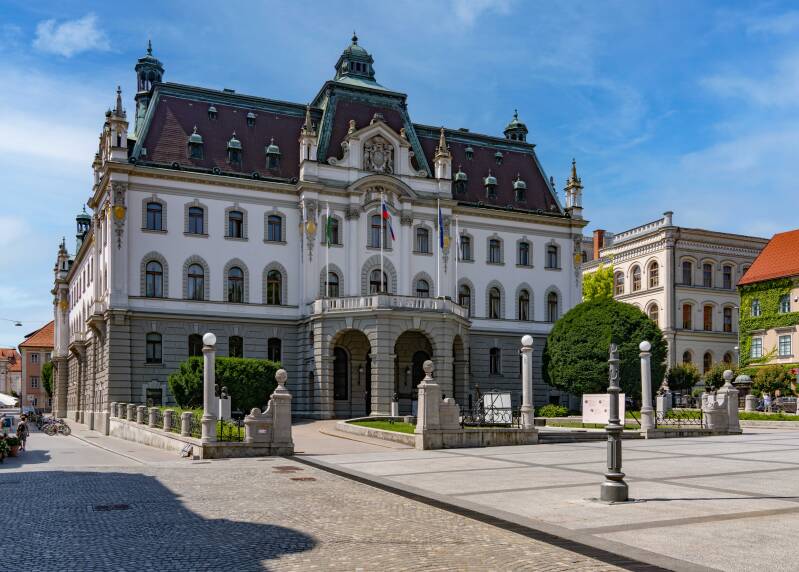
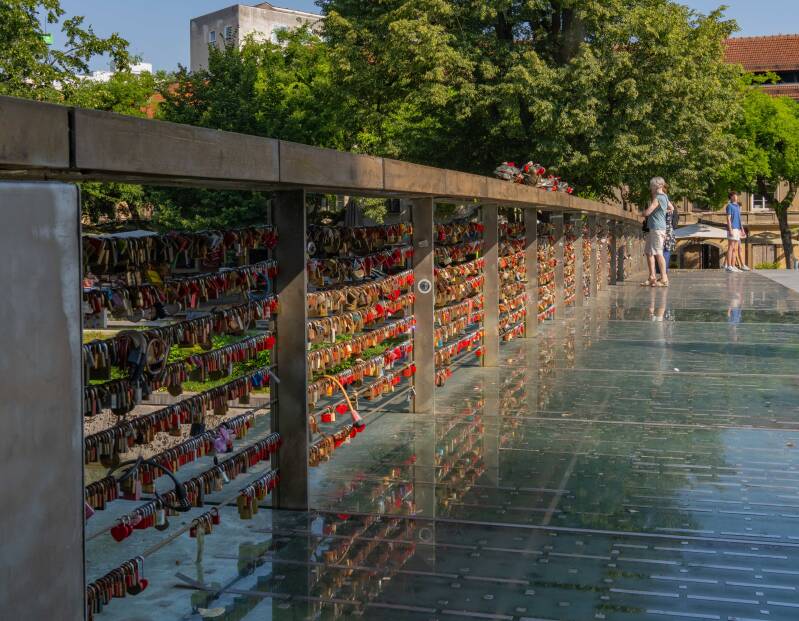
Mesarski Most, Footbridge of padlocks over the Ljublanica River
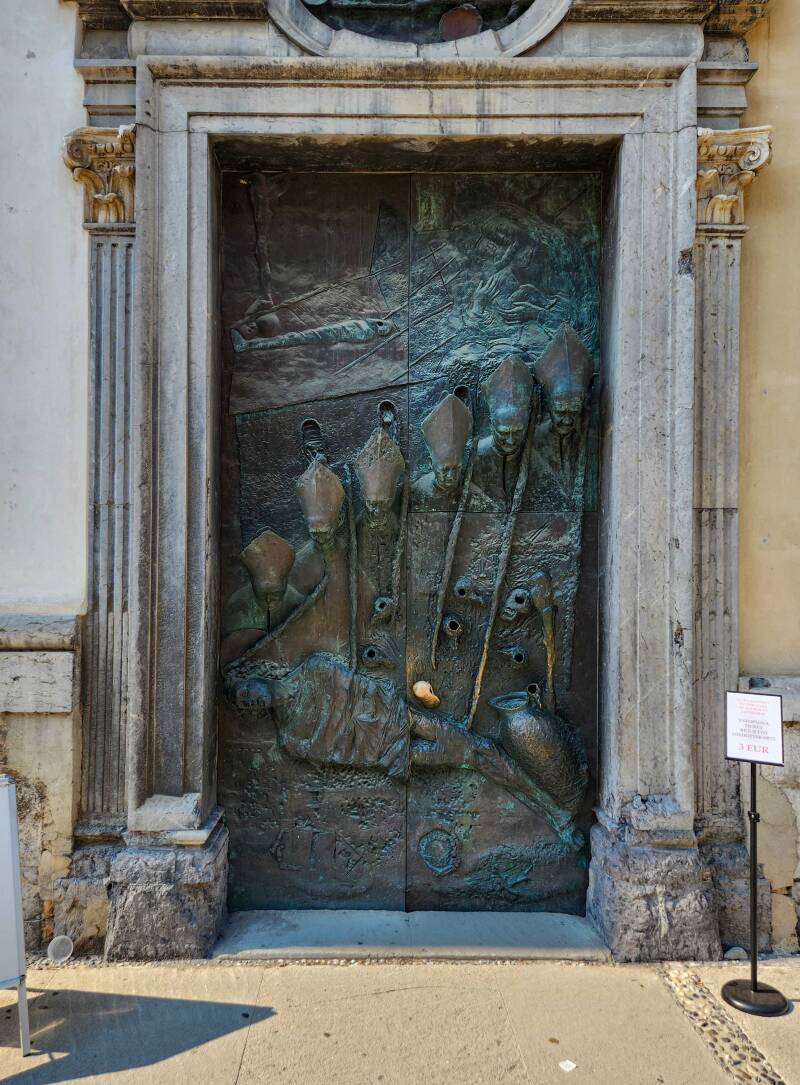
St. Nicholas's Cathedral in Ljubljana
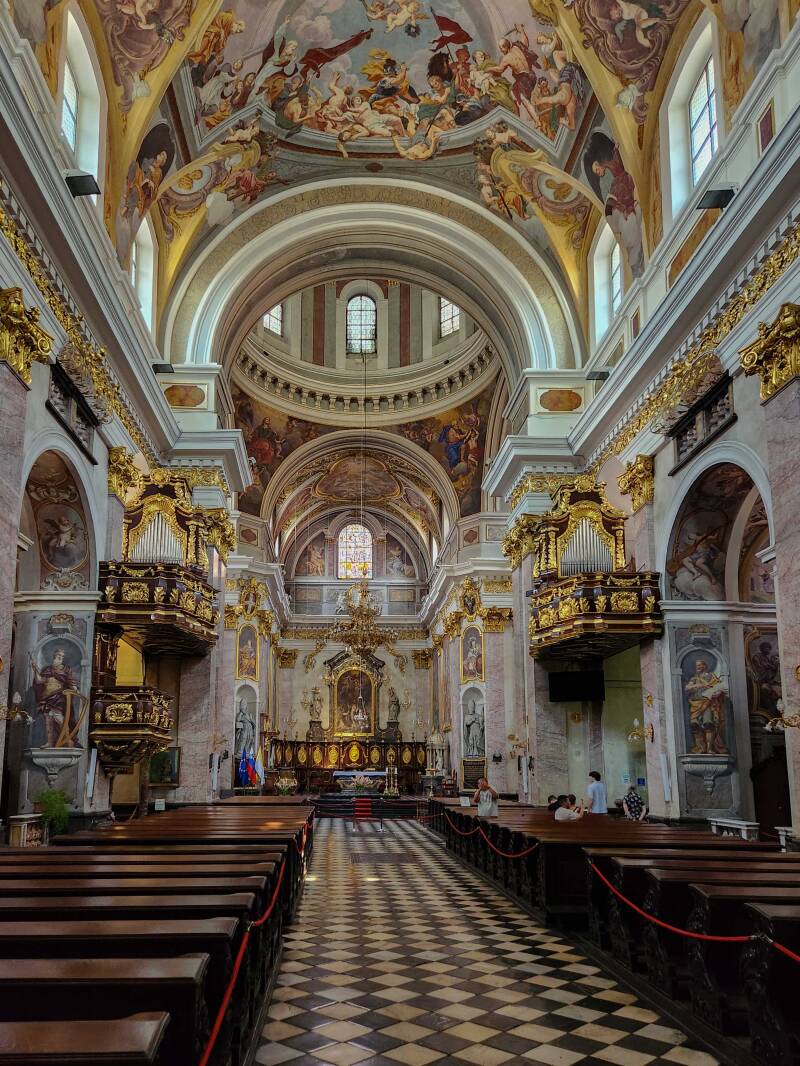
Logar Valley
The Logar Valley is a typical U-shaped glacial valley. The Kamnik Alps surround the grassy and forested valley. The mountains produce a number of waterfalls. Rinka falls is at the southern end of the valley. The tallest of the surrounding mountains in almost 8,000 feet in height. This landscape park has varied hiking trails and remarkable vistas.
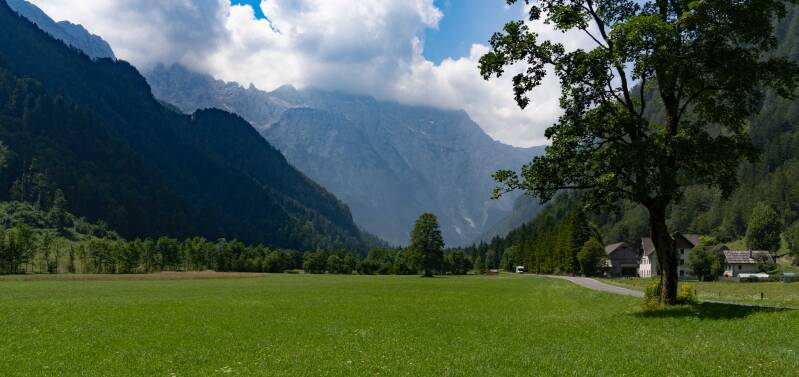

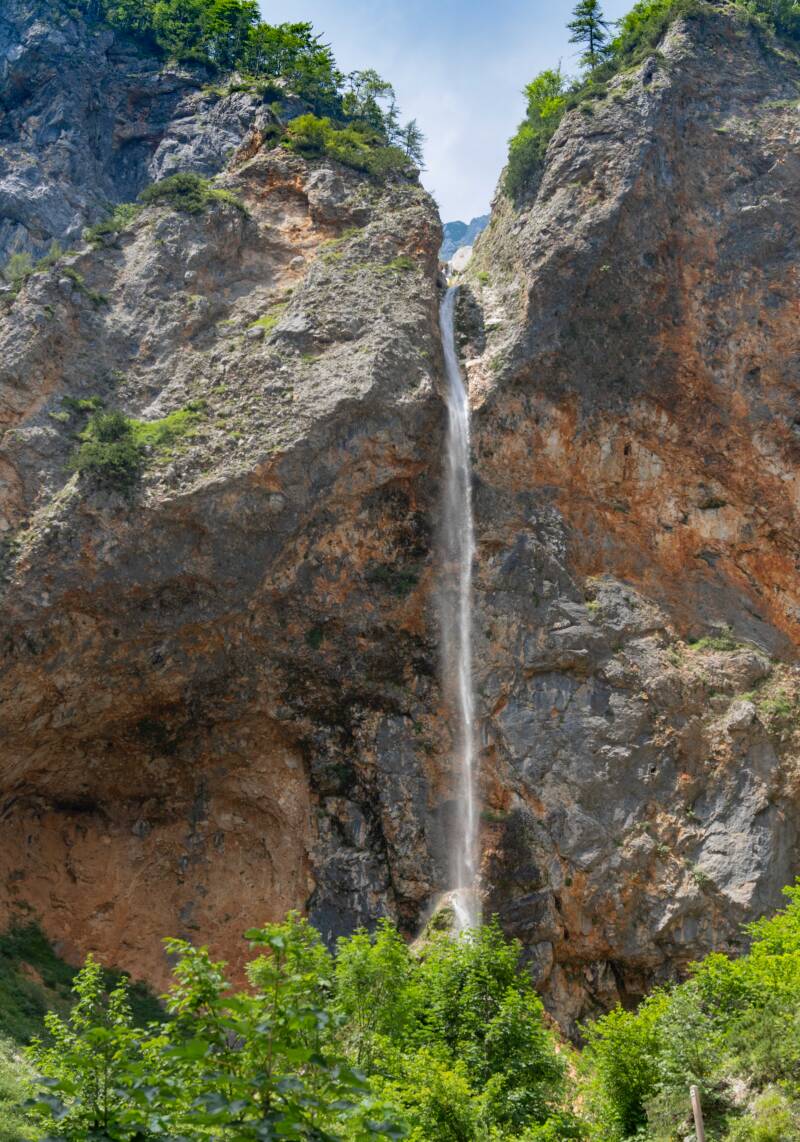

Rinka Falls Palenk Falls
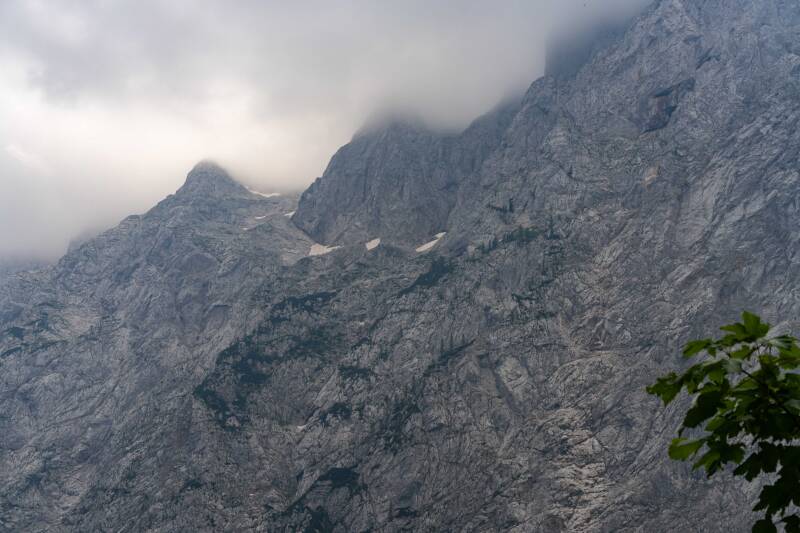


Mts. Around Logar Valley
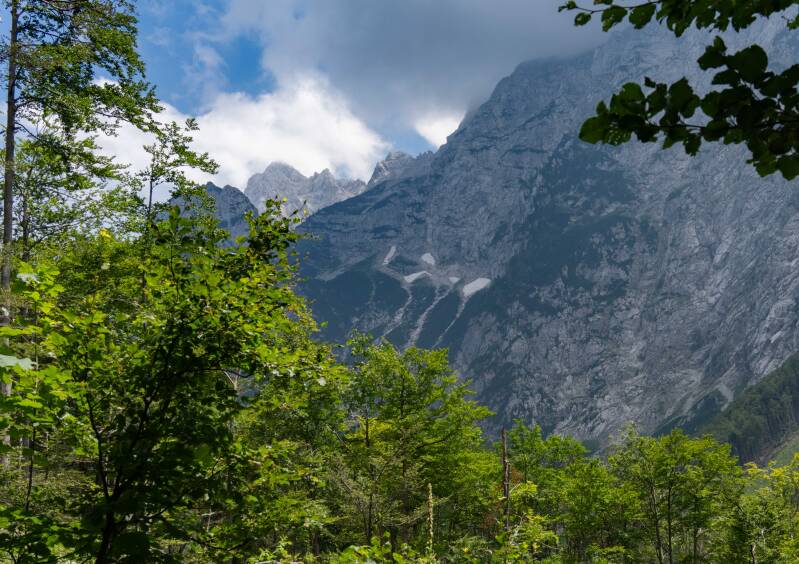
Bled, Slovenia
Bled is a town on Lake Bled. The area is the most popular tourist destination in the country. Glacial Lake Bled with its iconic church island and castle on the hill overlooking the lake, make it a must stop. Photographs of the lake can be found everywhere online and on postcards. That was part of the desire for us to visit the country.
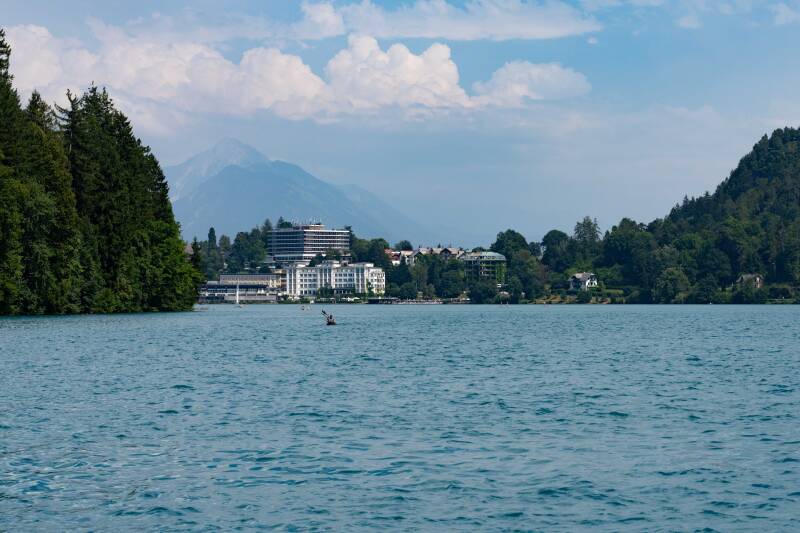
Town of Bled

Island church on Lake Bled with several names: The Church of the Mother of God on the Lake, Pilgrimage Church of the Assumption of Mary, The Church of Mary the Queen, and Our Lady of the Lake.
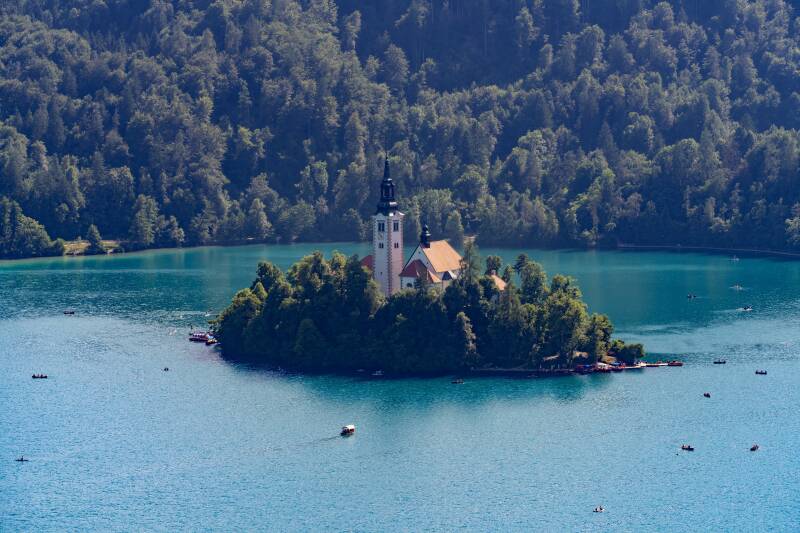
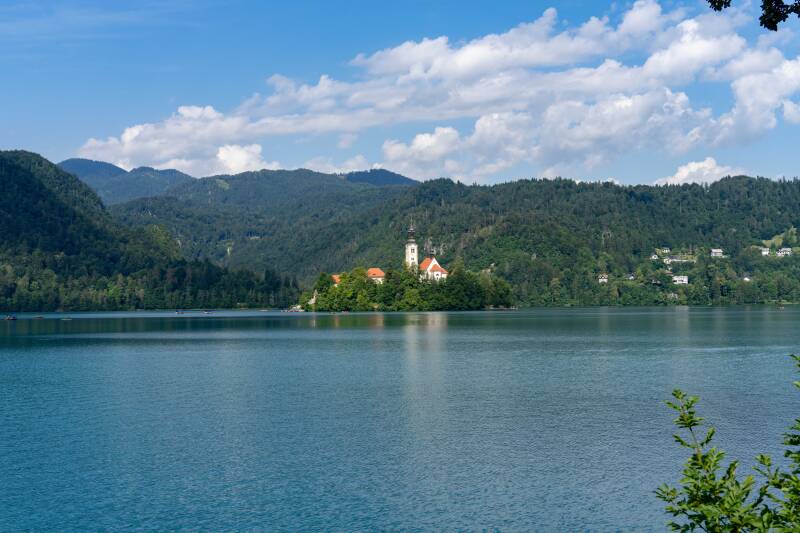
More views of the island church
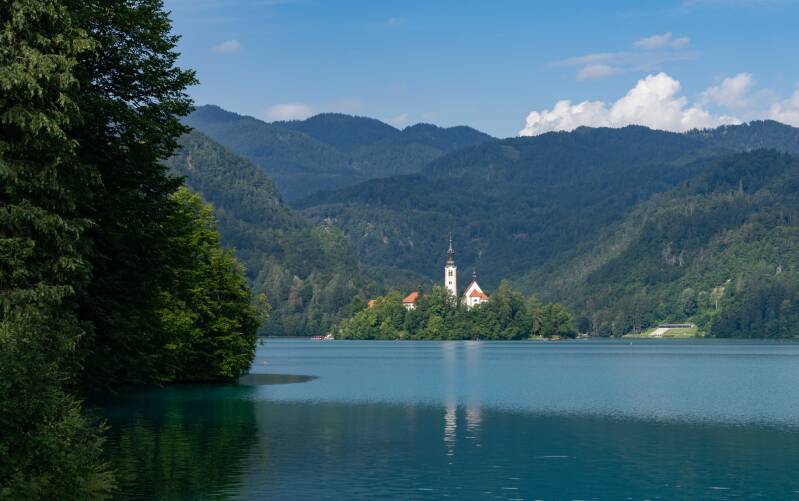
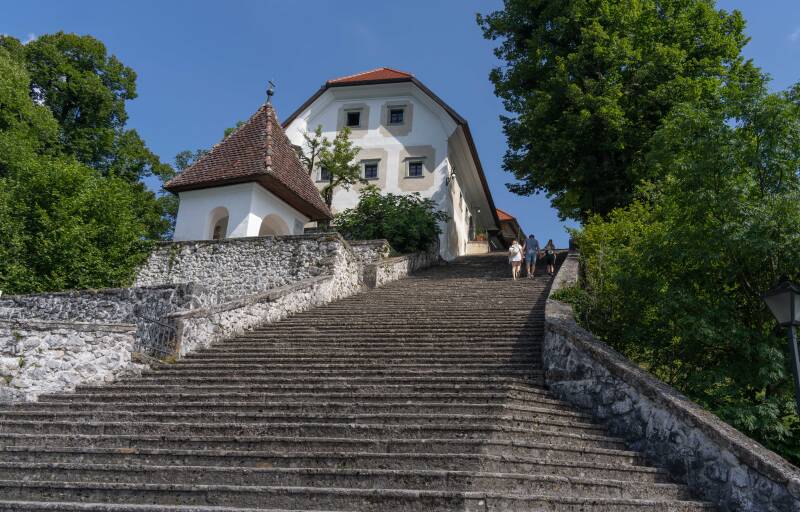
Stairway from the water to the church

Photos of the church tower, altar and frescoes

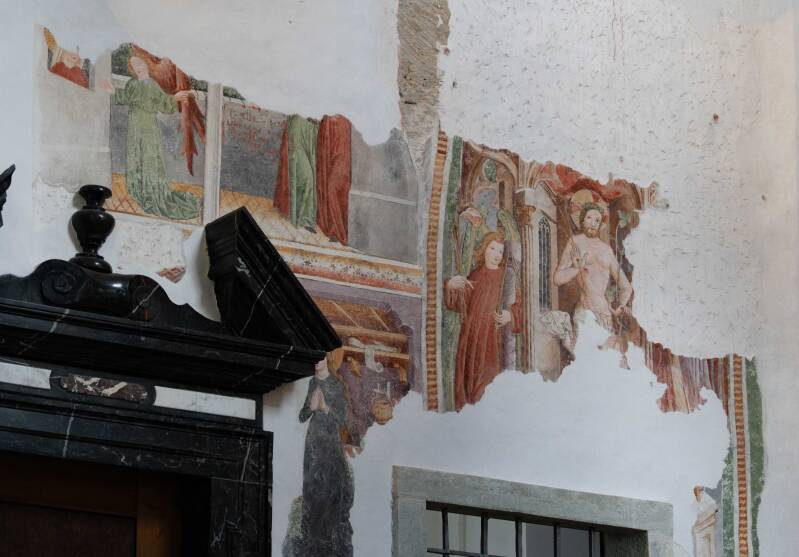
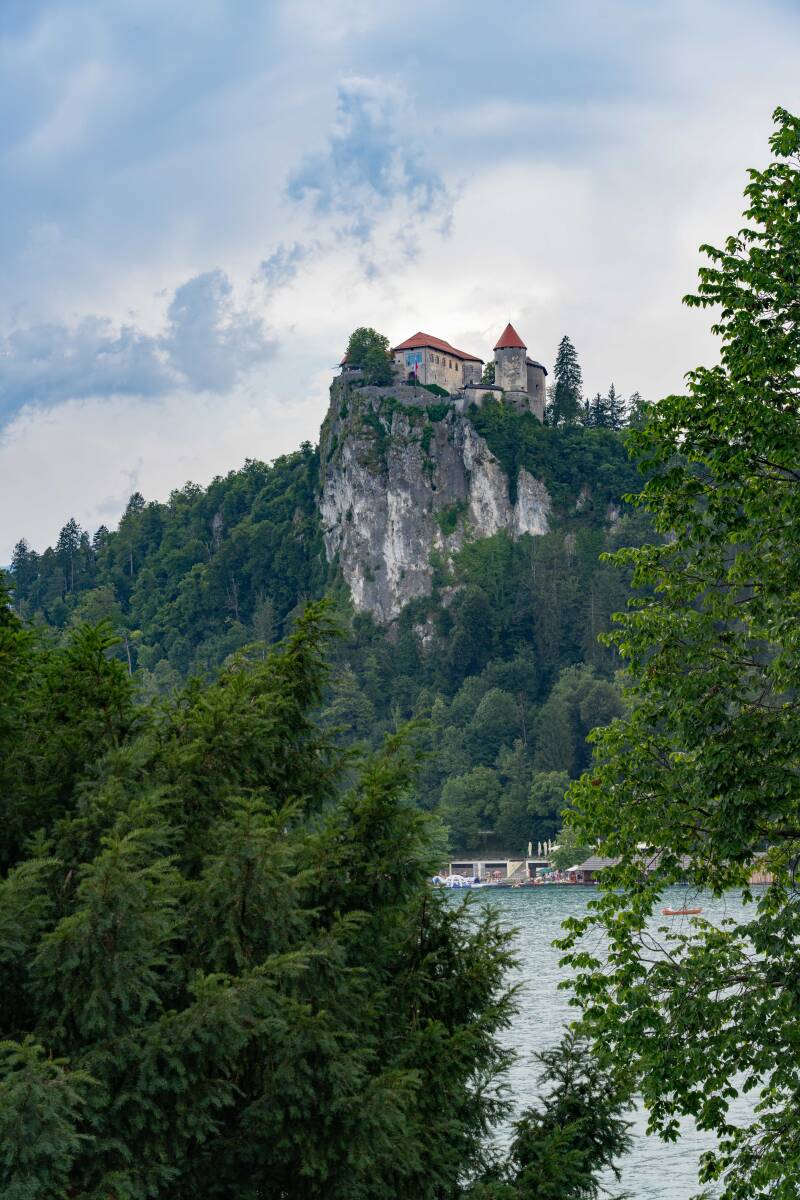
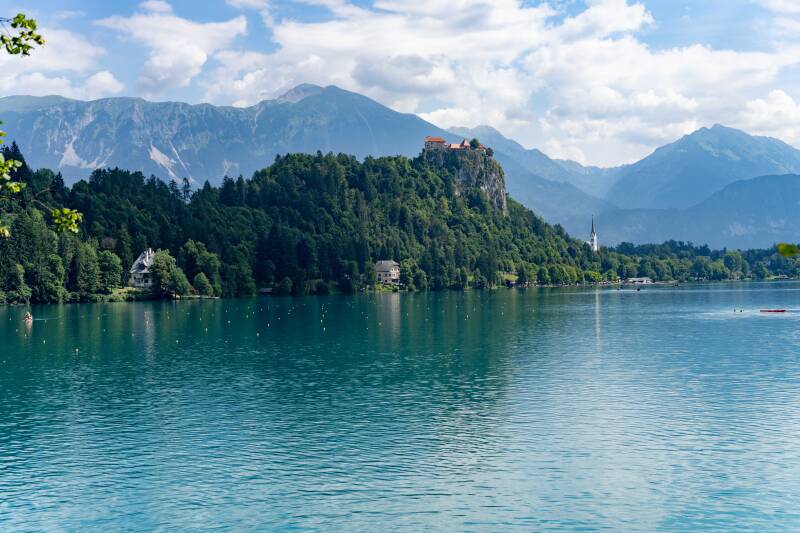
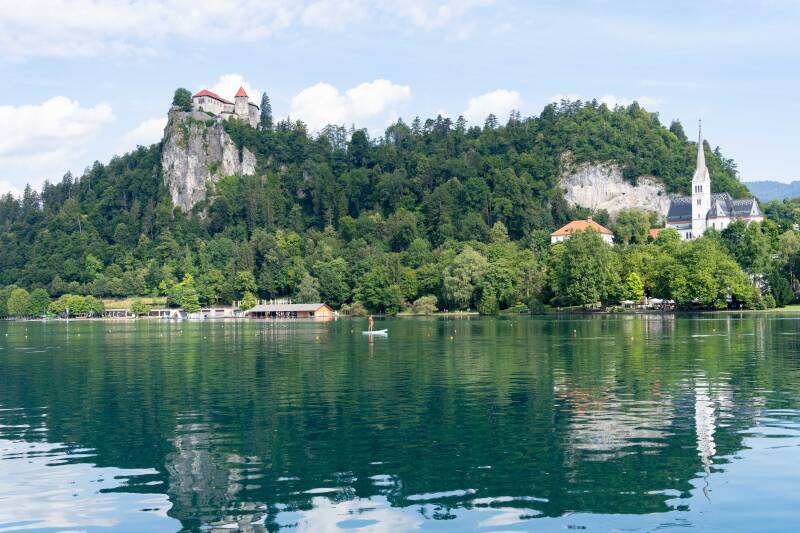
Multiple views of Bled Castle
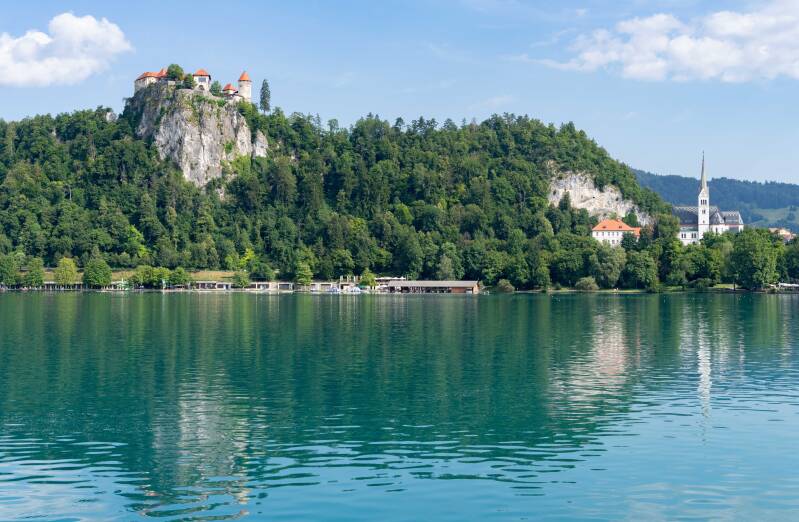
Water playground in Lake Bled


Former summer home of Josip Tito, communist leader of Yugoslavia
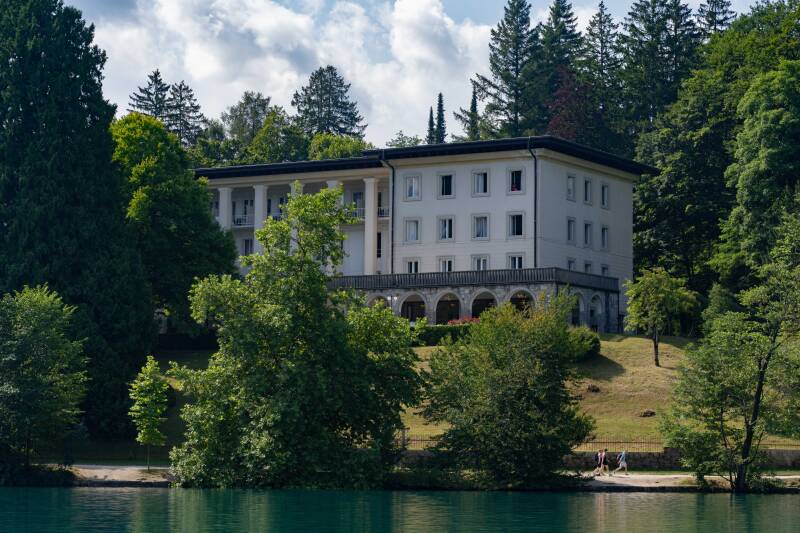
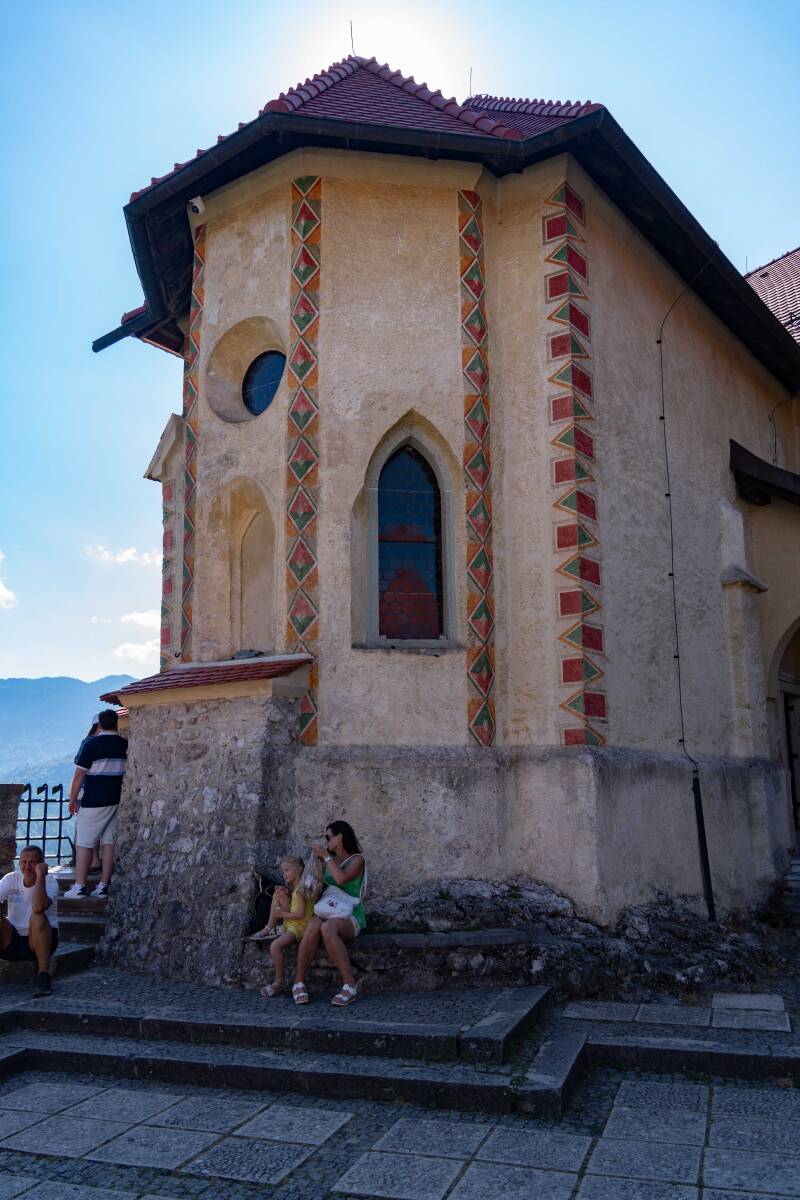
Bled Castle is a medieval castle built on a precipice above the city and lake. It is the oldest castle in Slovenia-1011. Today it is employed as a historical museum. On the grounds are a chapel, two courtyards, and a restaurant. Of course frescoes cover the chapel walls.
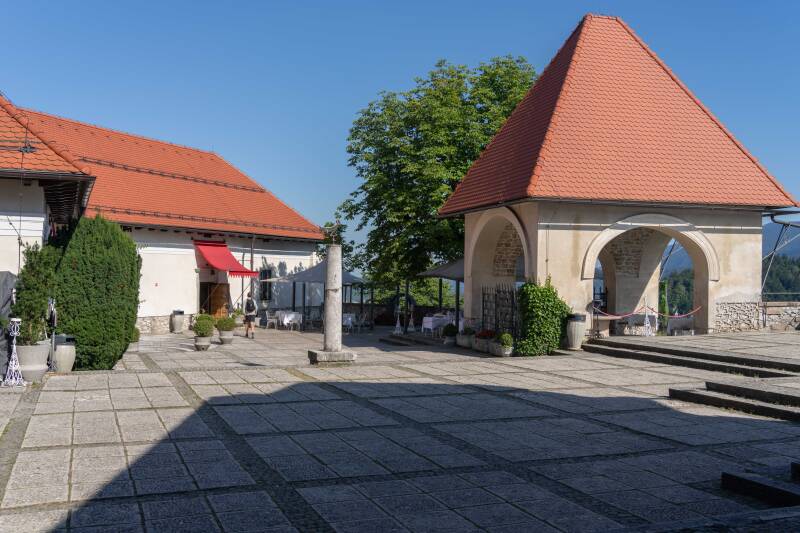

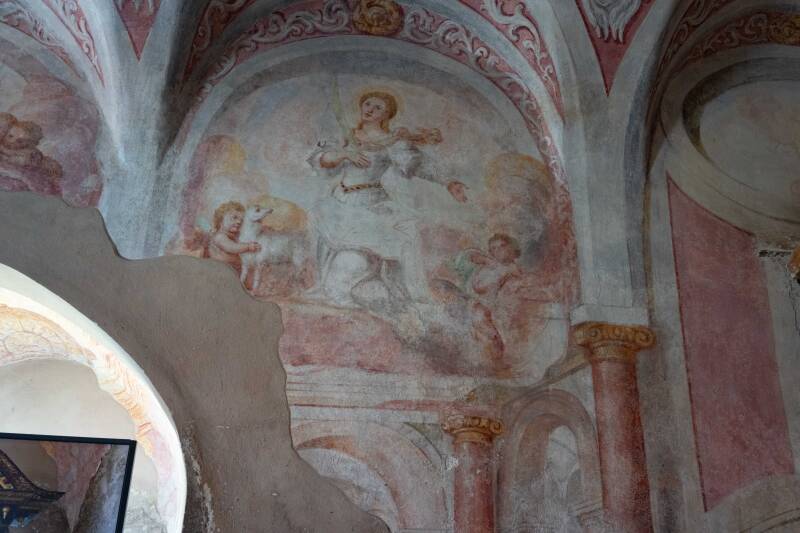
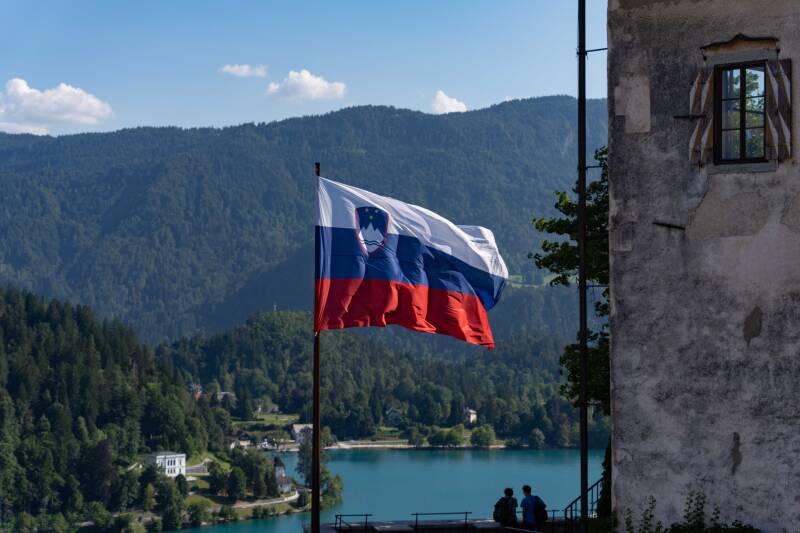
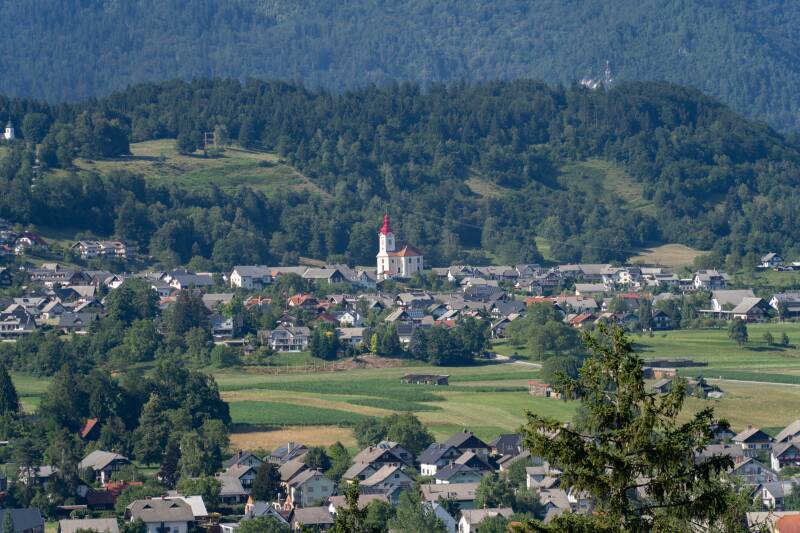
The Slovenian Flag and other views from Bled Castle
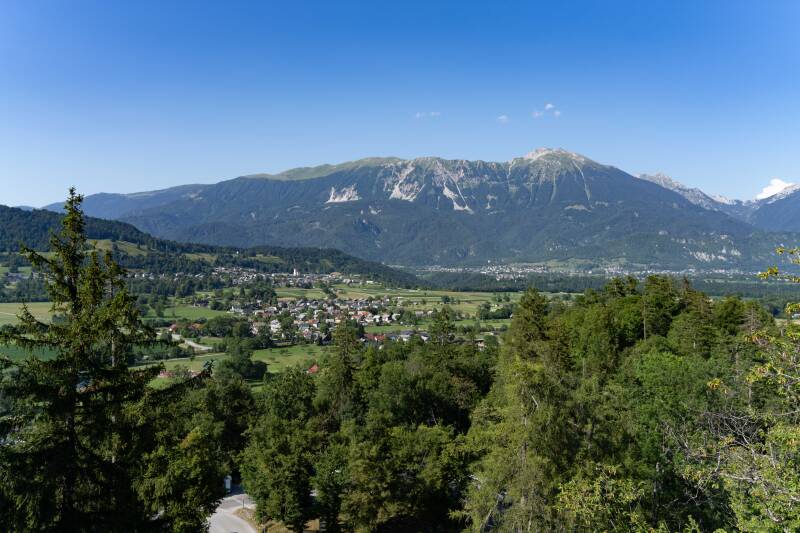
A mile from Bled is the Vintgar Gorge, a 2 mile walk along what the Radovna River carved through the mountains.
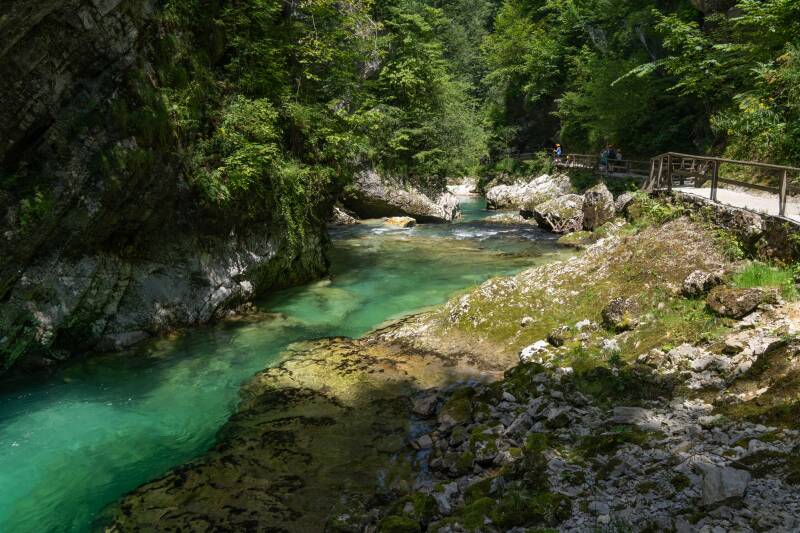
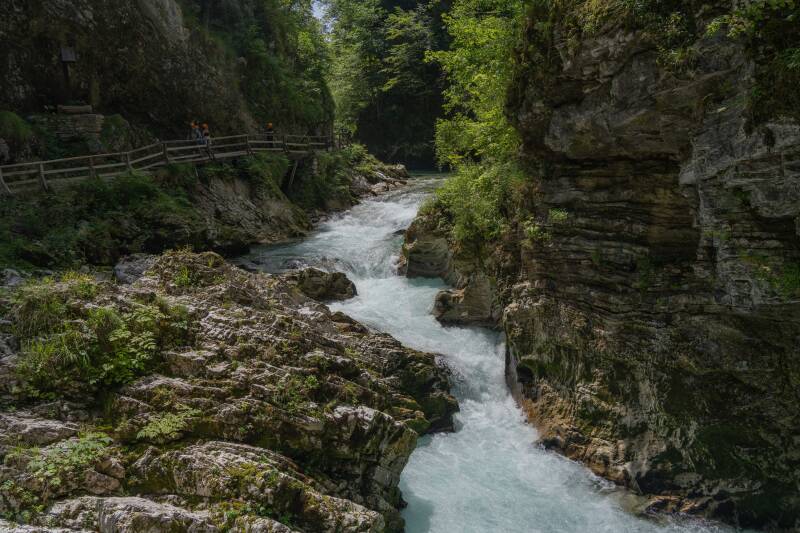
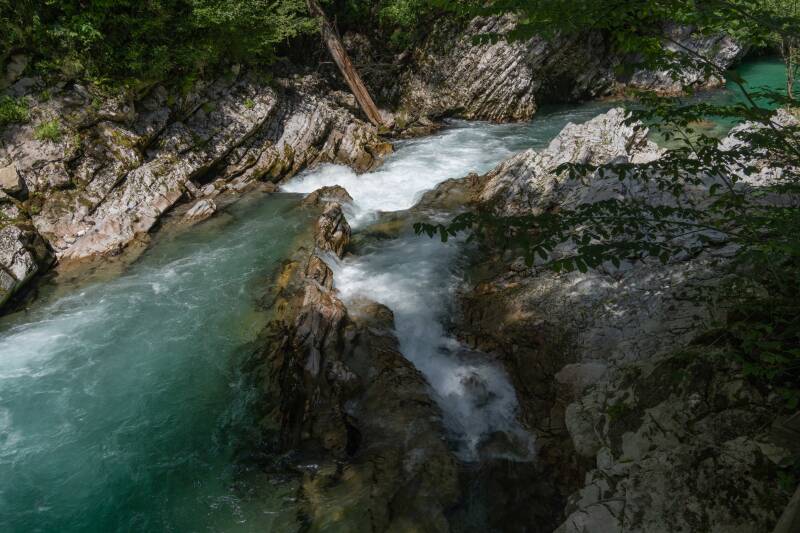
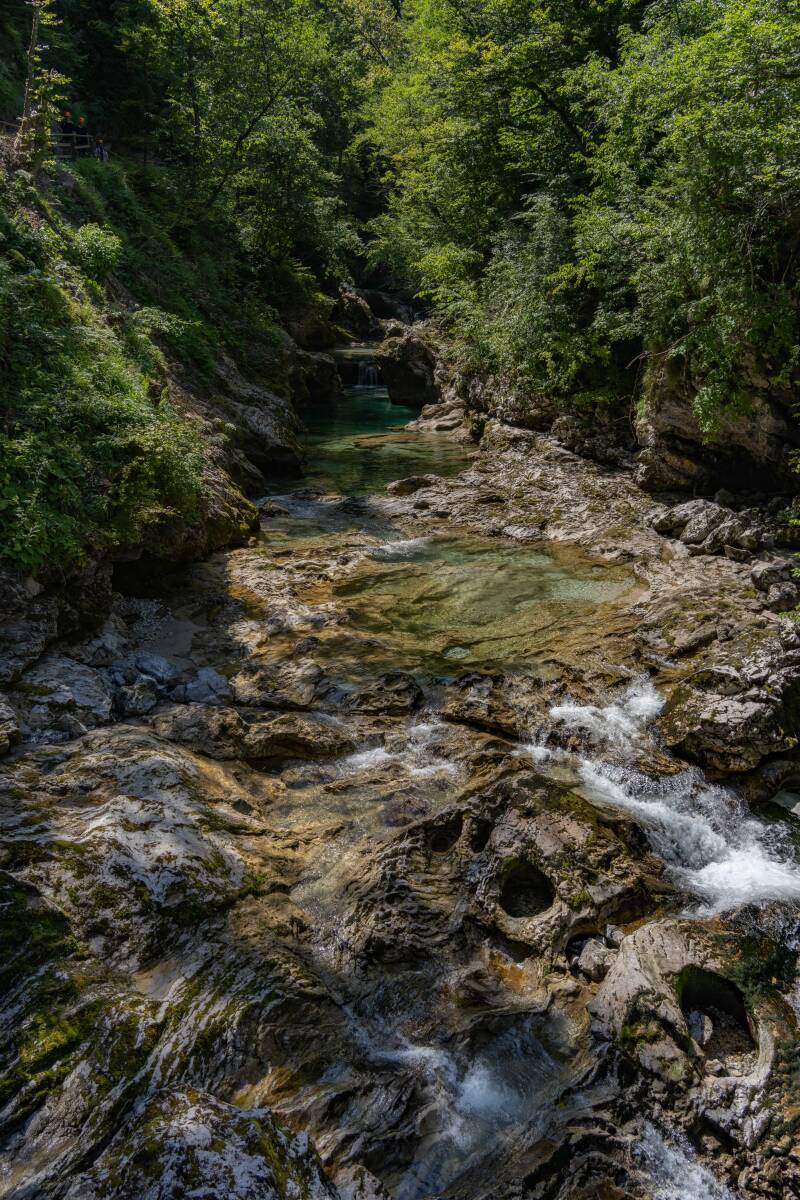
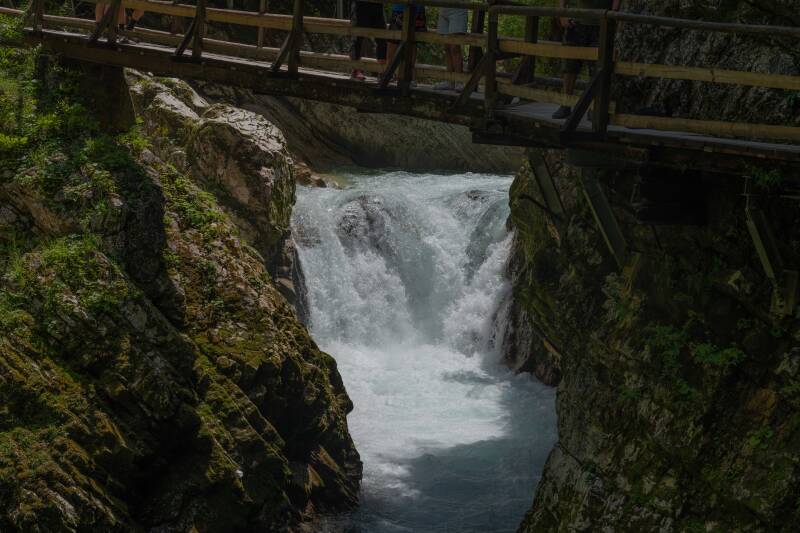
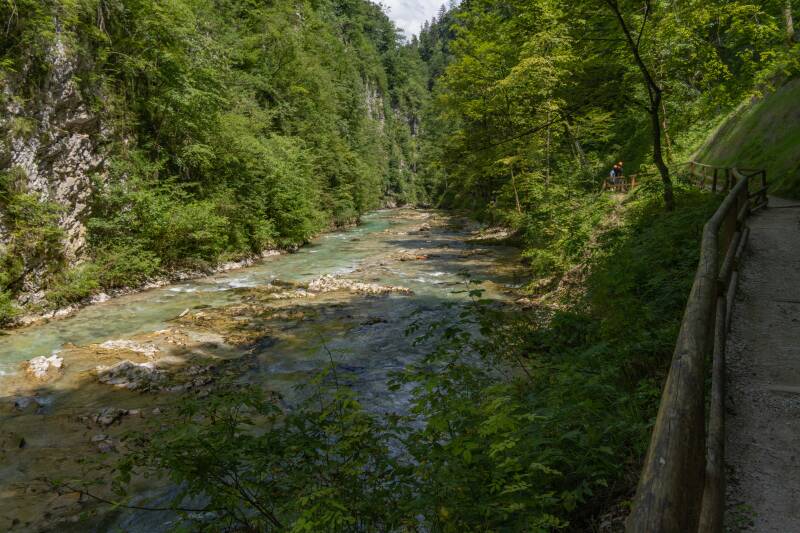
The trail thru the gorge was an easy walk. The trail back circles around one side of the gorge, up hills and along a slope with panoramic views.

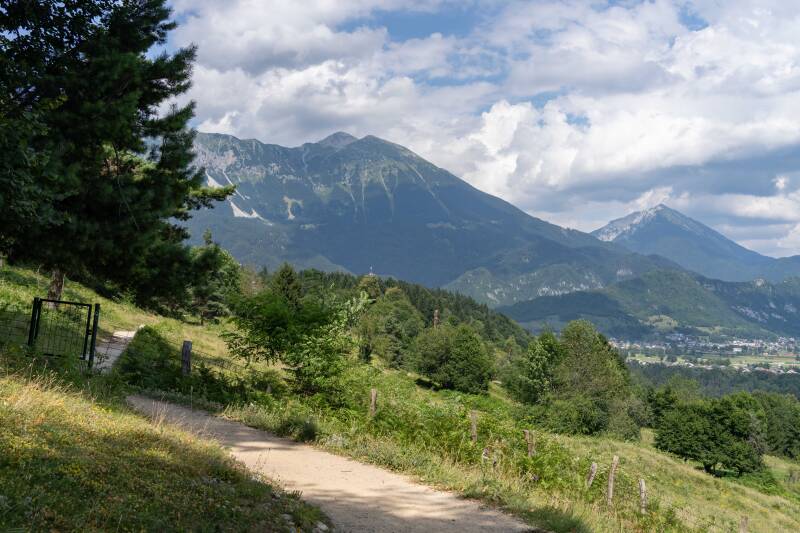
One view is of this small village and picturesque church

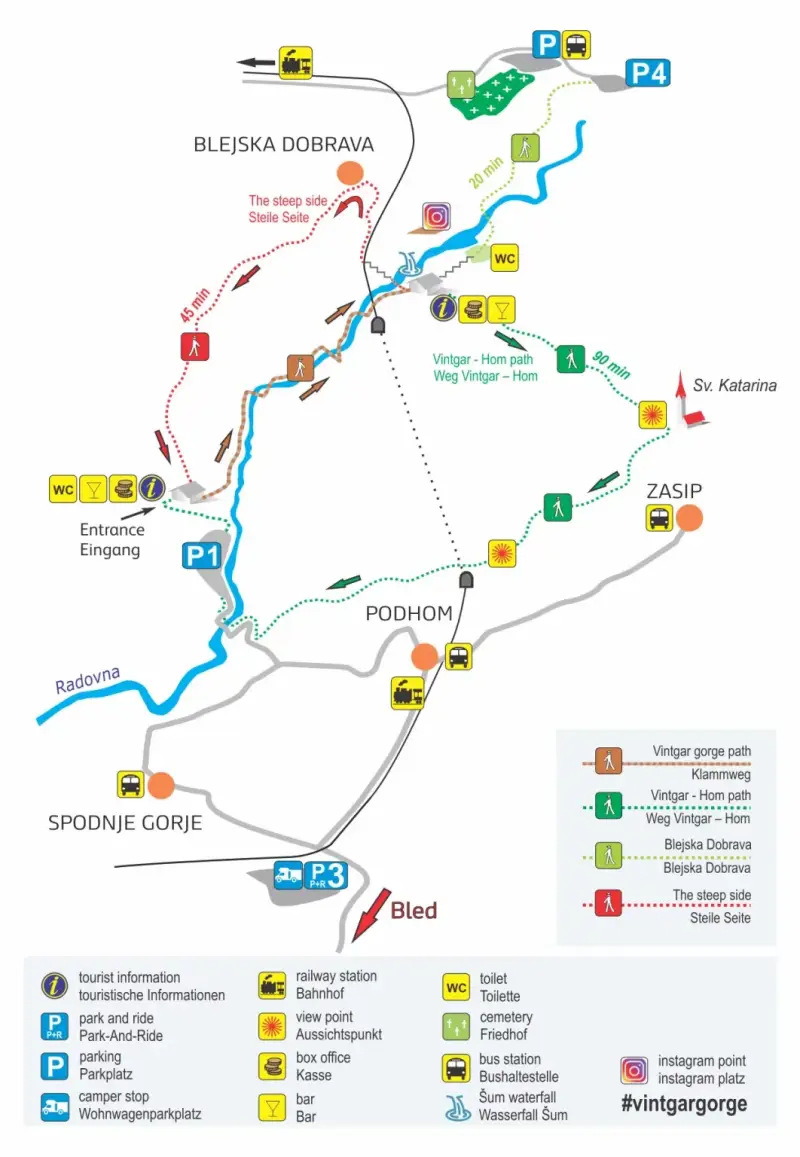
As mentioned, the Vintgar Gorge path follows the river and is easy, it takes about an hour. At the end of the gorge we learned that there were two routes back. One very tough, but shorter (doted red on the map). The other easier but longer (doted green on the map). No going back along the river.
It turned out the "easy" way was actually a very hard walk, especially the first part that winded up hill though a forest. The later part had great vistas and was easier, the whole trek took us over 2 hours.
From Bled we drove north and west to the Soča Valley and the mountain village of Bovec. Entering the valley from the north over Vrsic Pass (5285 ft.) is a tummy tickling experience.

The view at Vrsic Pass
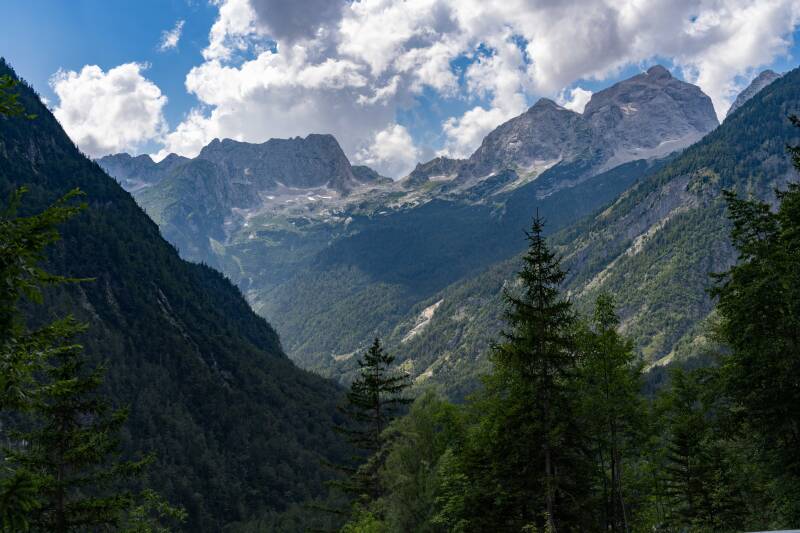

The winding road down to the floor of the valley travels along profuse views of the Julian Alps

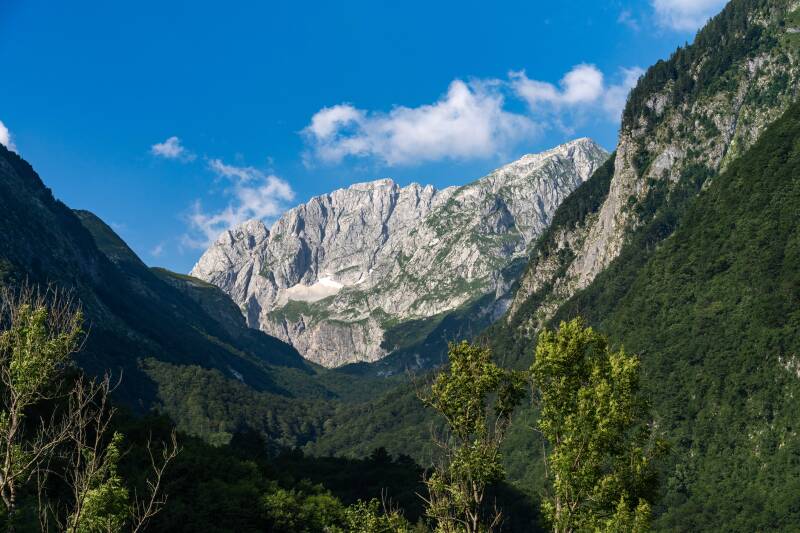
Along the road is the Soča River
Popular for swimming, kayaking and river rapid rafting
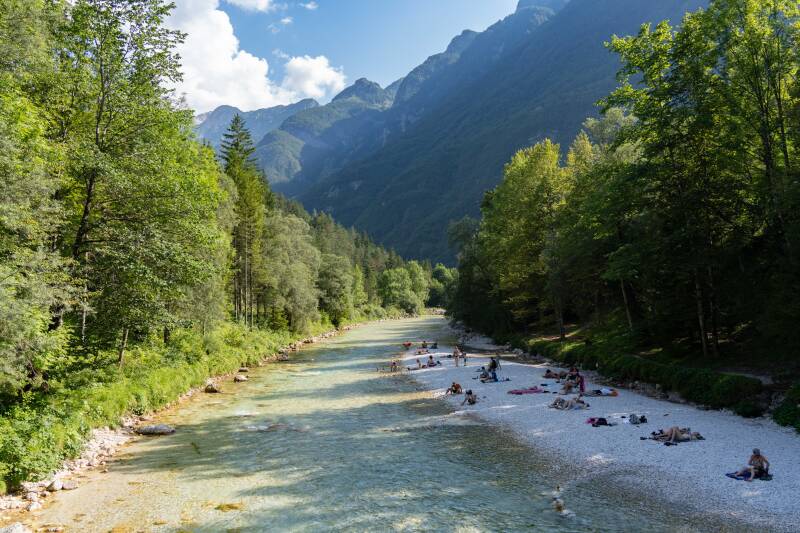
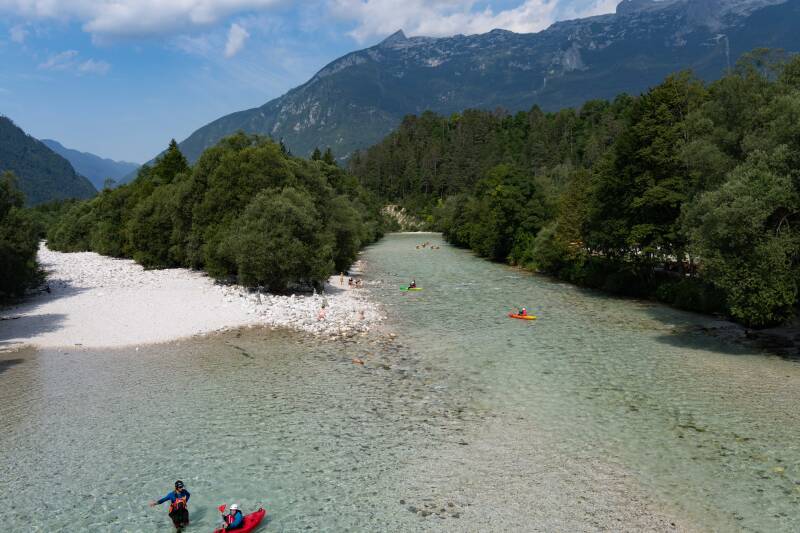
In the valley
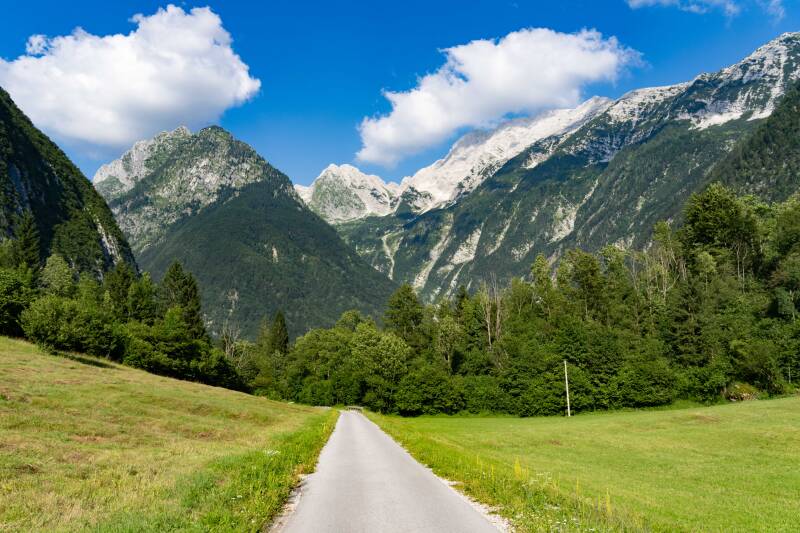
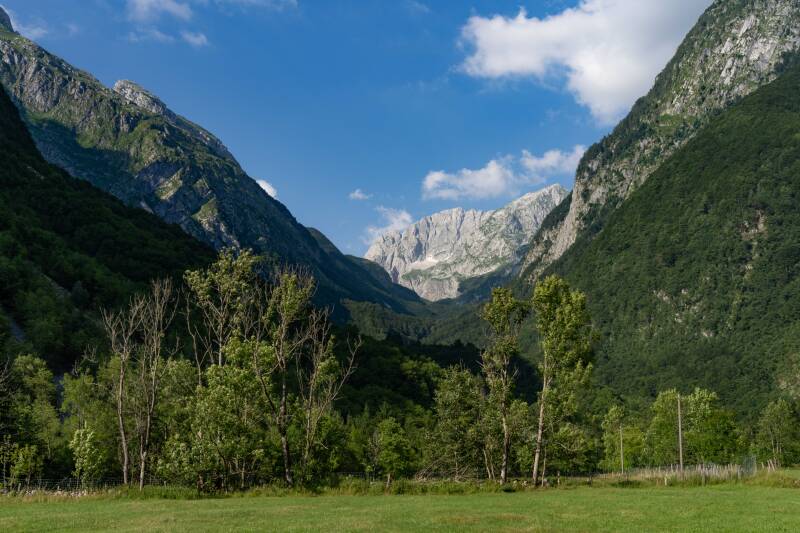





The village of Bovec in Soča Valley

Boca Waterfalls in Soča Valley
The coastal town Piran, on the Adriatic Sea




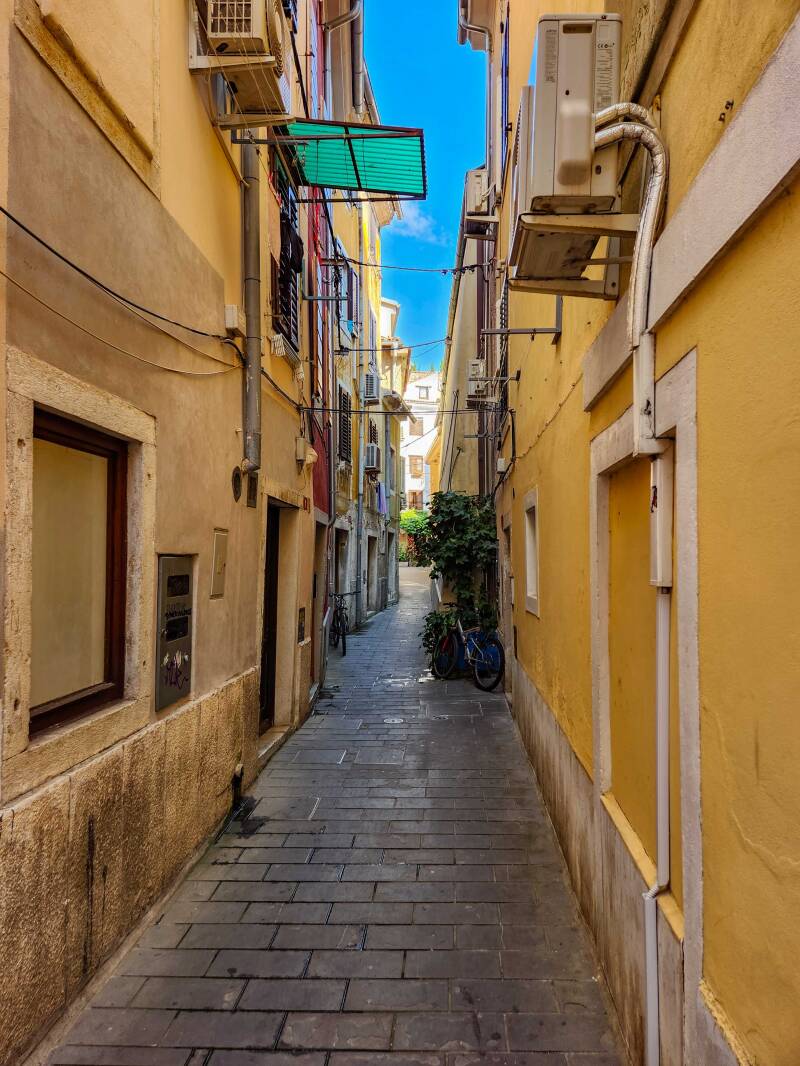
Postojna Cave
This is the second largest karst cave in Slovenia, 15 miles long, and a top tourist attraction. Graffiti in the cave has been dated to 1213, its modern discovery was in 1818. There is modern lighting throughout the cave. A narrow gauge train takes visitors from the entrance thru carved out rocks to the cave and a cavern said to be the size of the Roman Colosseum. The system was formed by the water of the Pivka River. The cave is made of Karst, a soluble carbonate rock like limestone, dolomite, and gypsum.

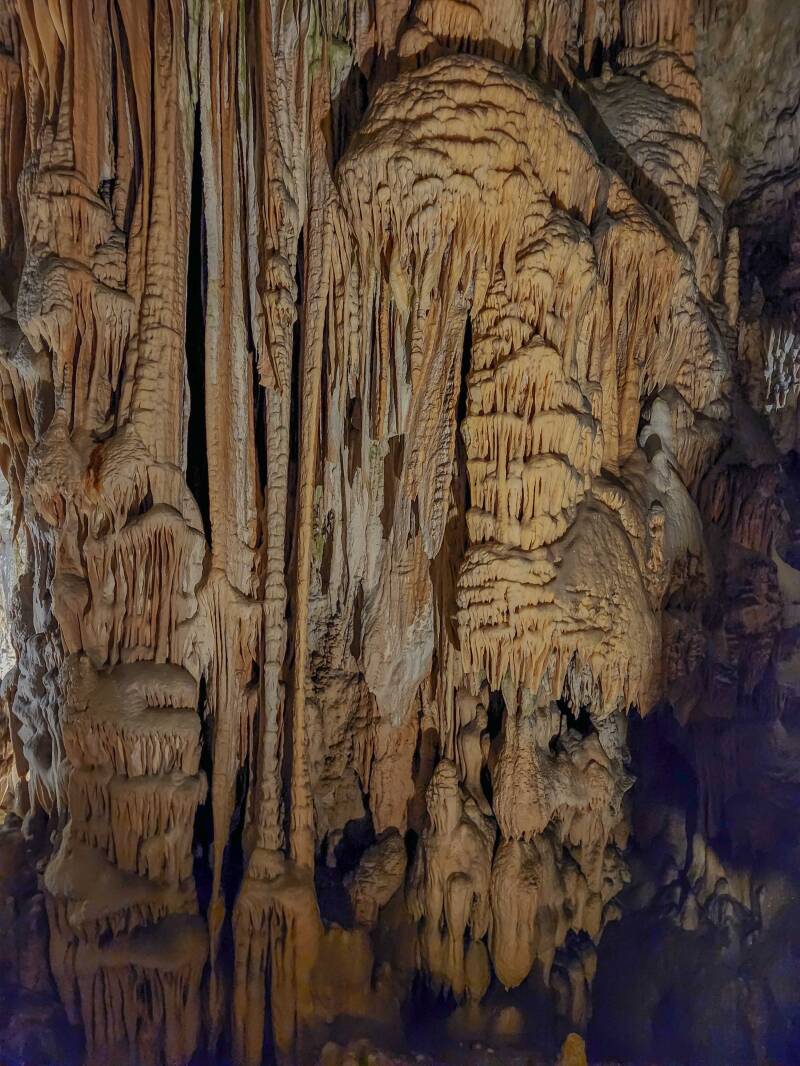
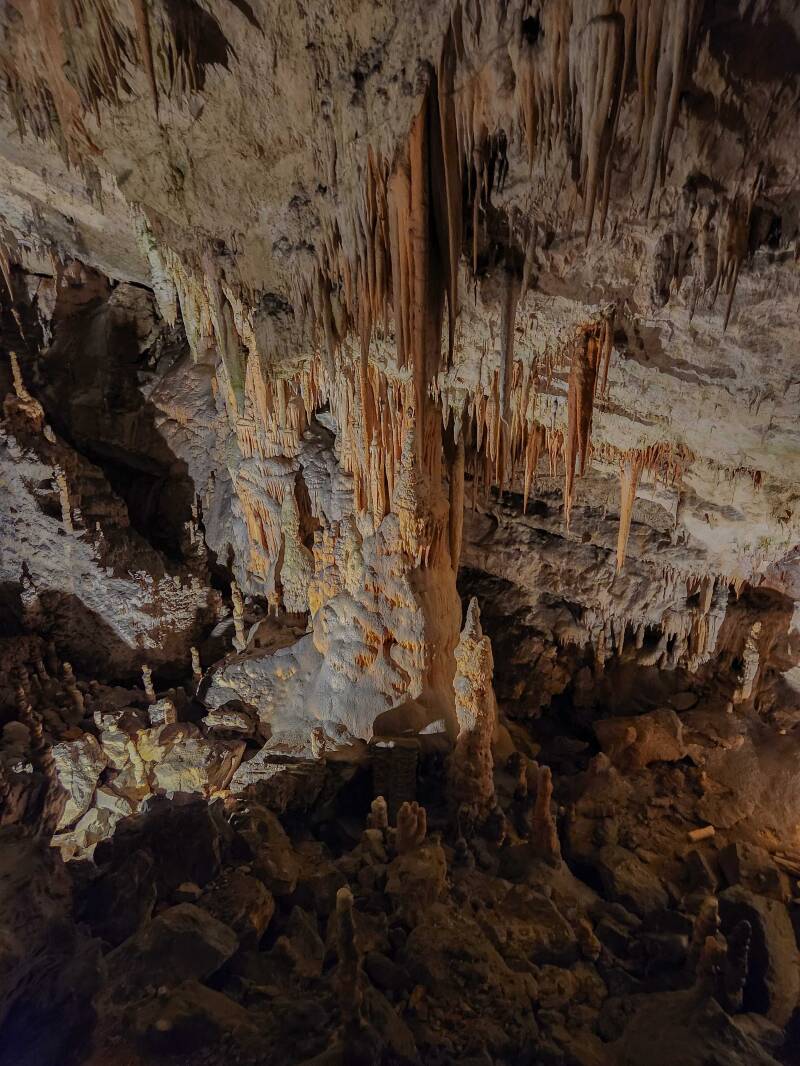
The many faces of Postojna Cave
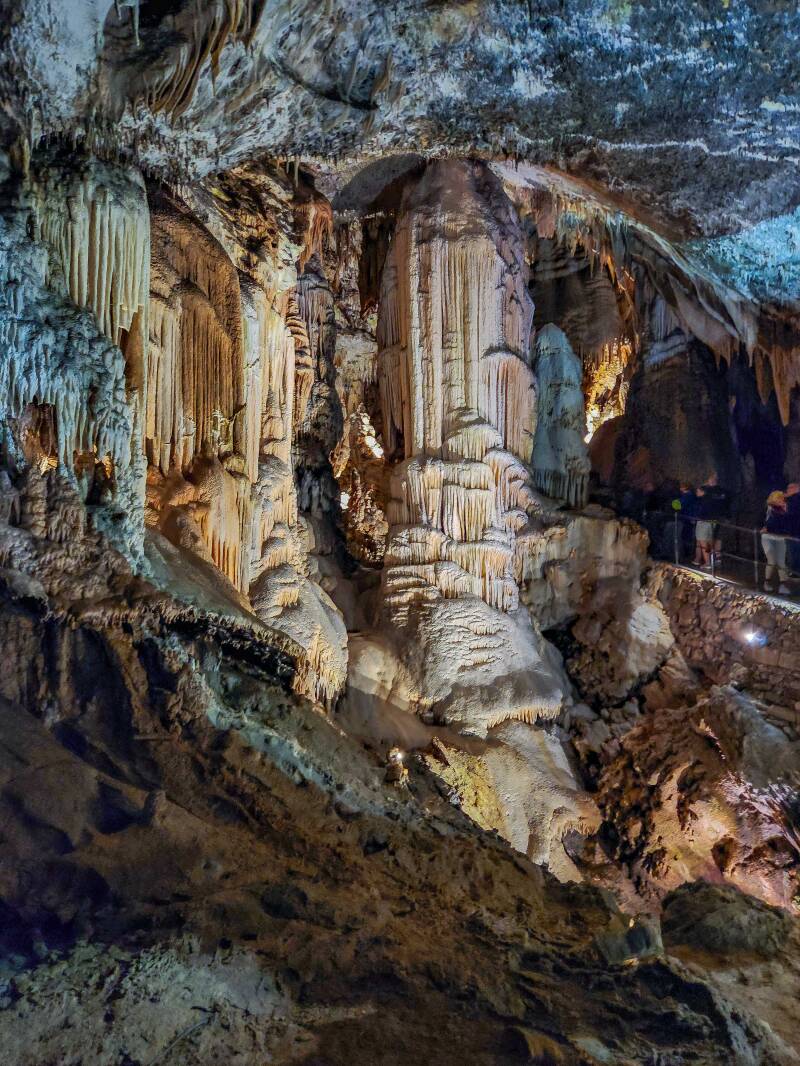
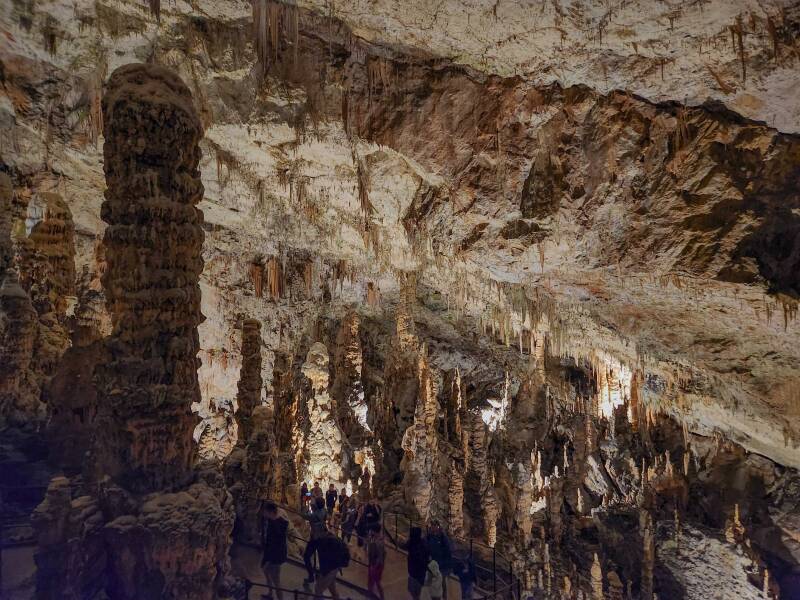
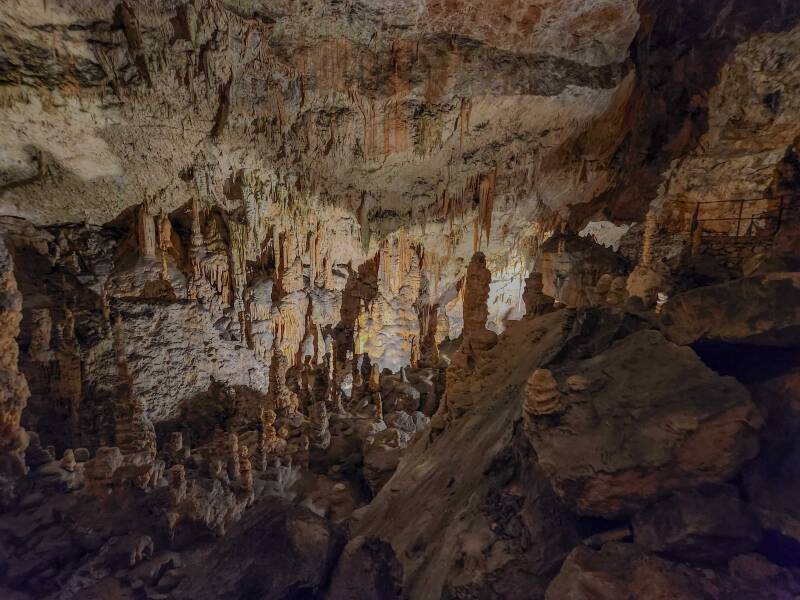
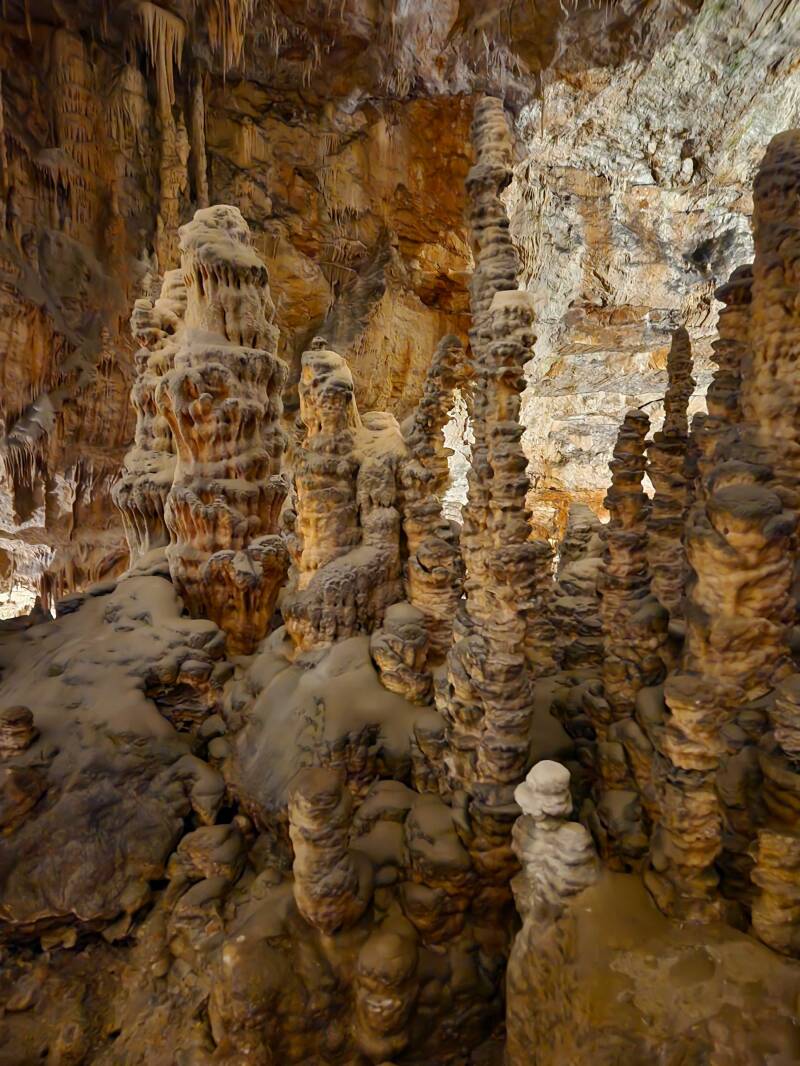
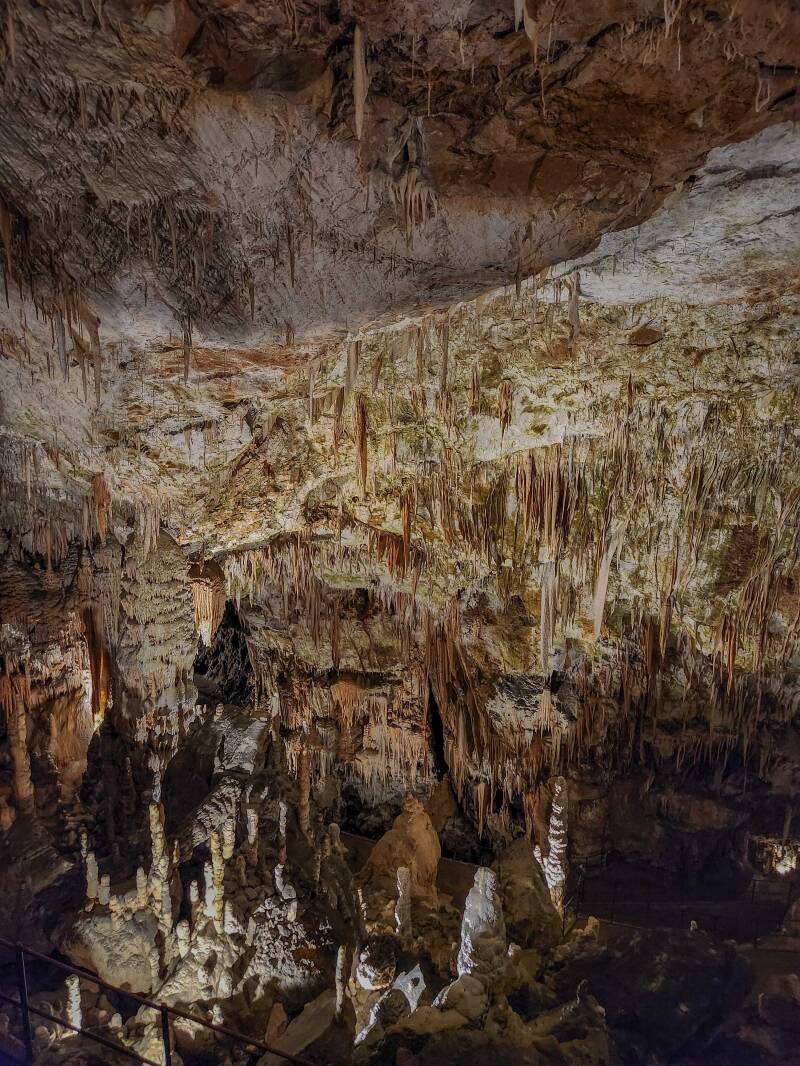
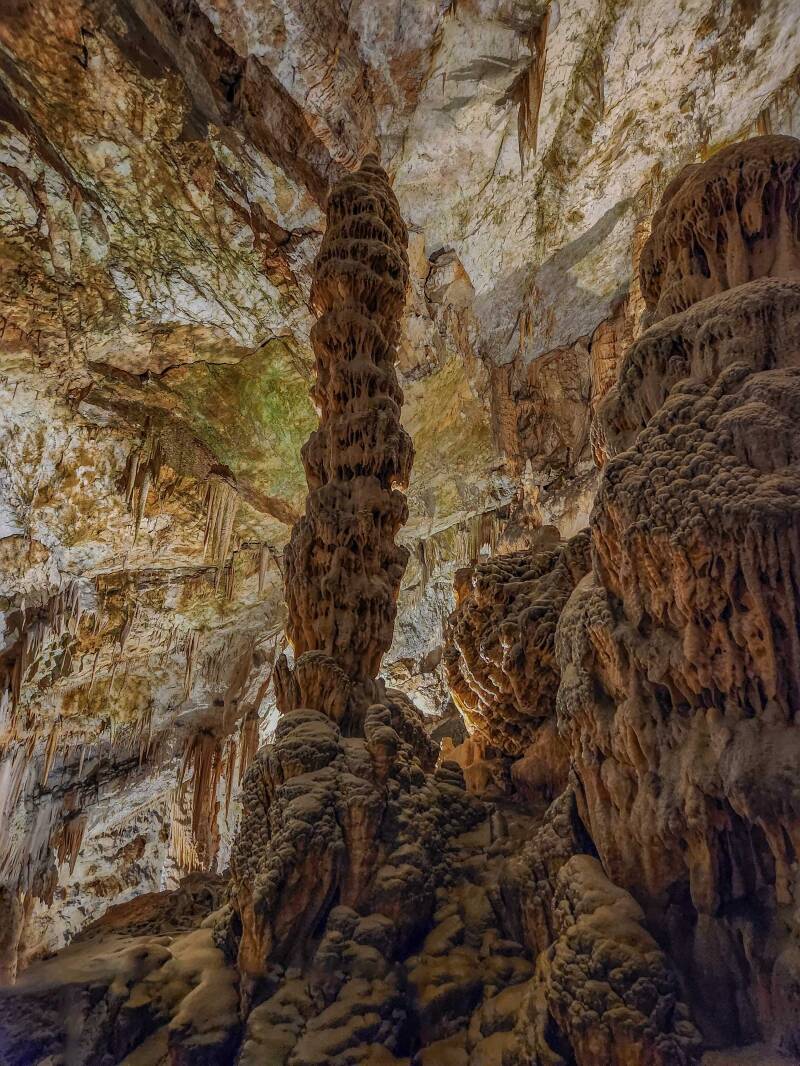
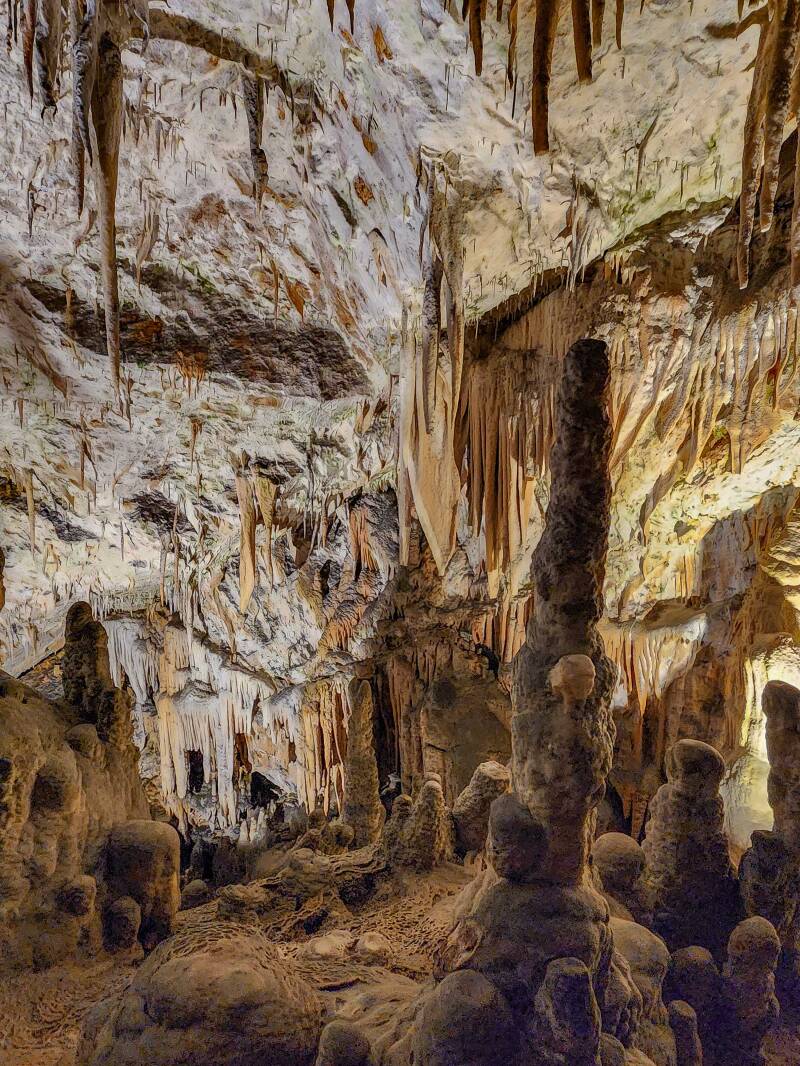
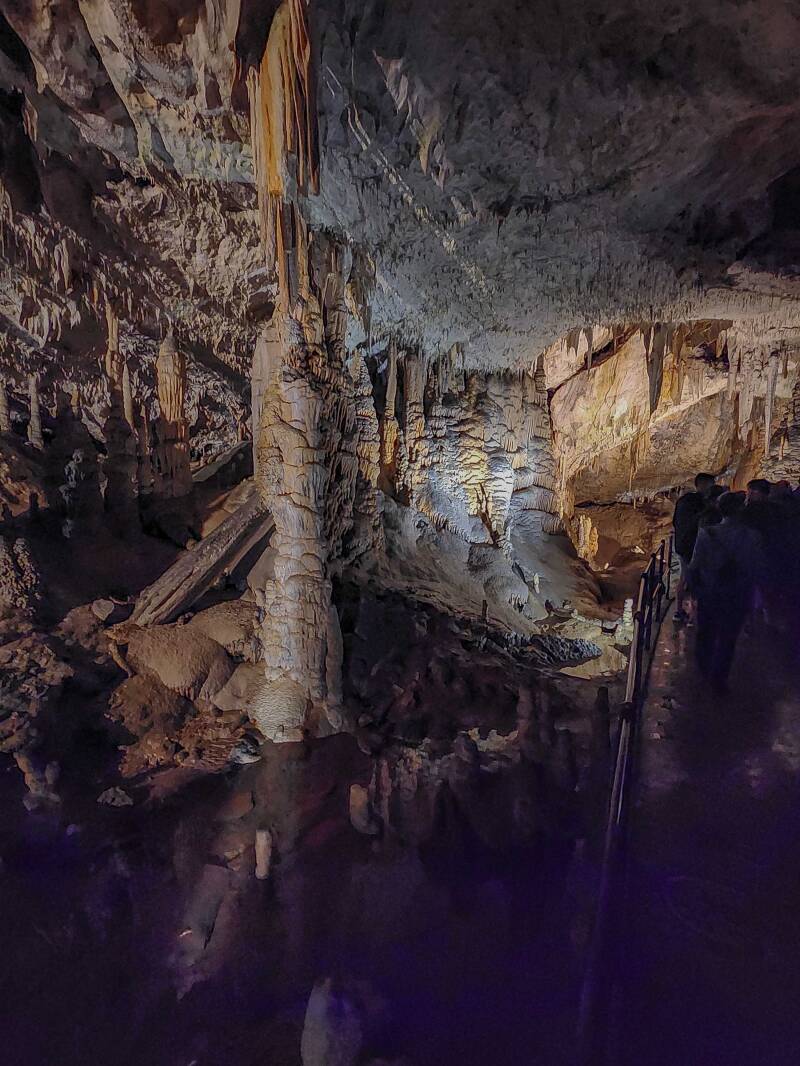
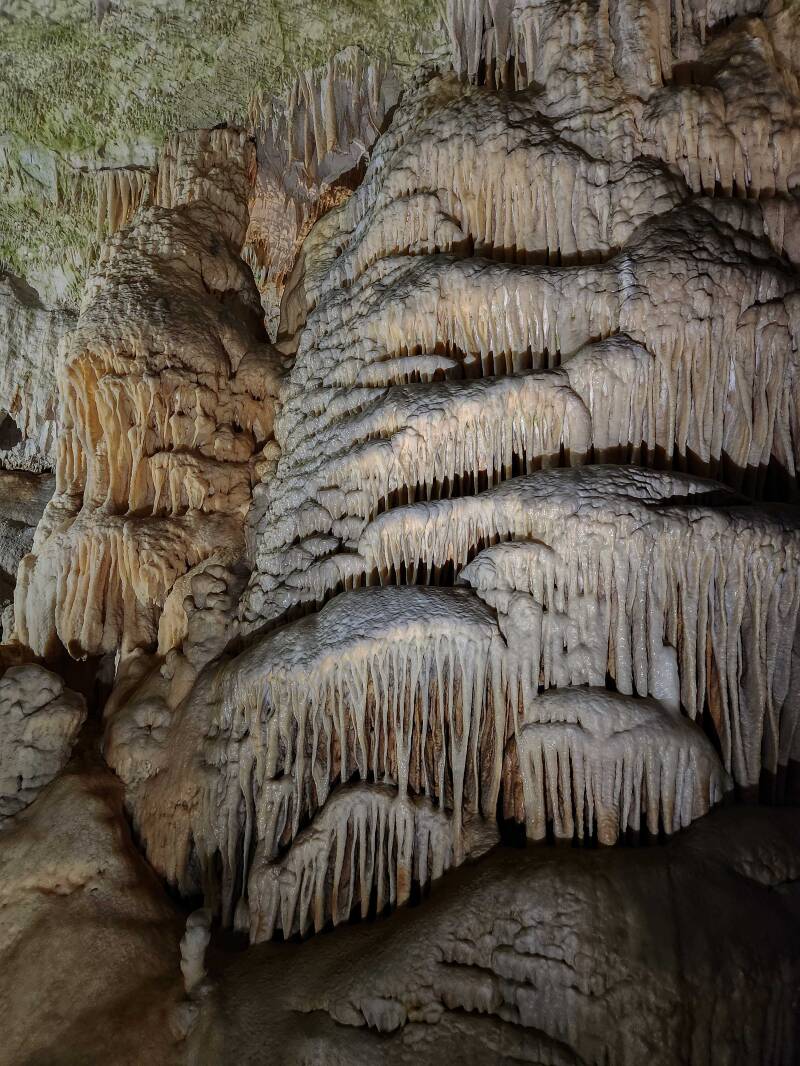
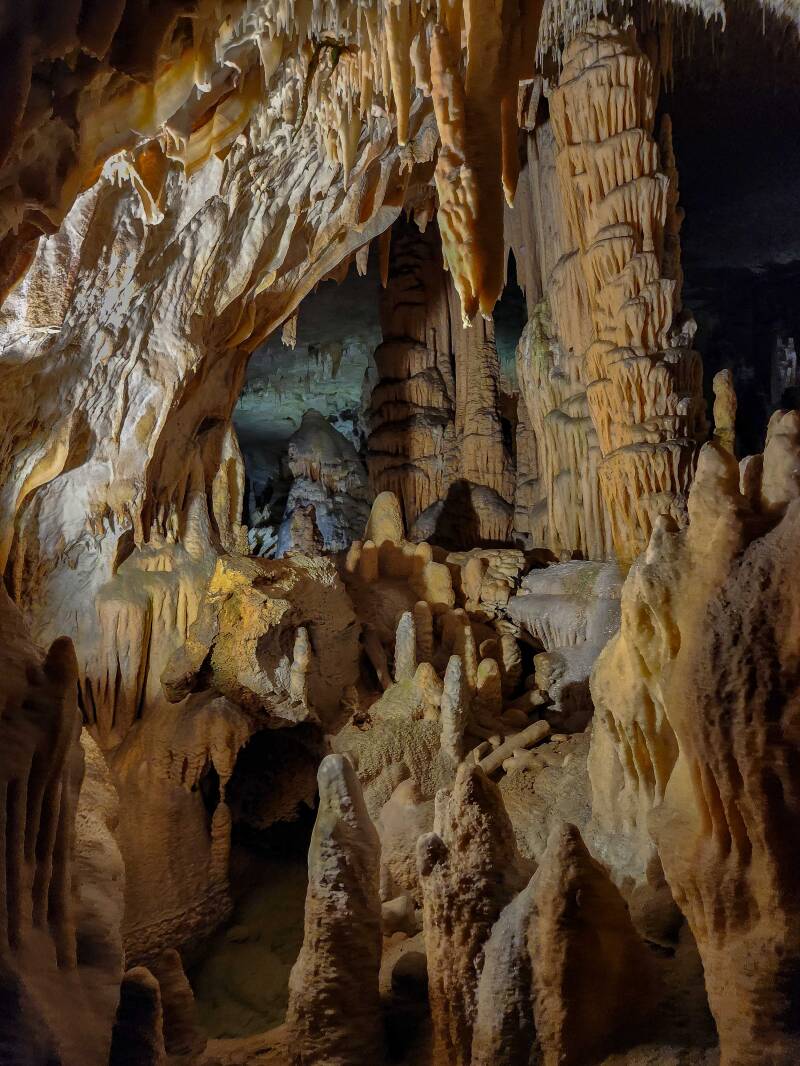

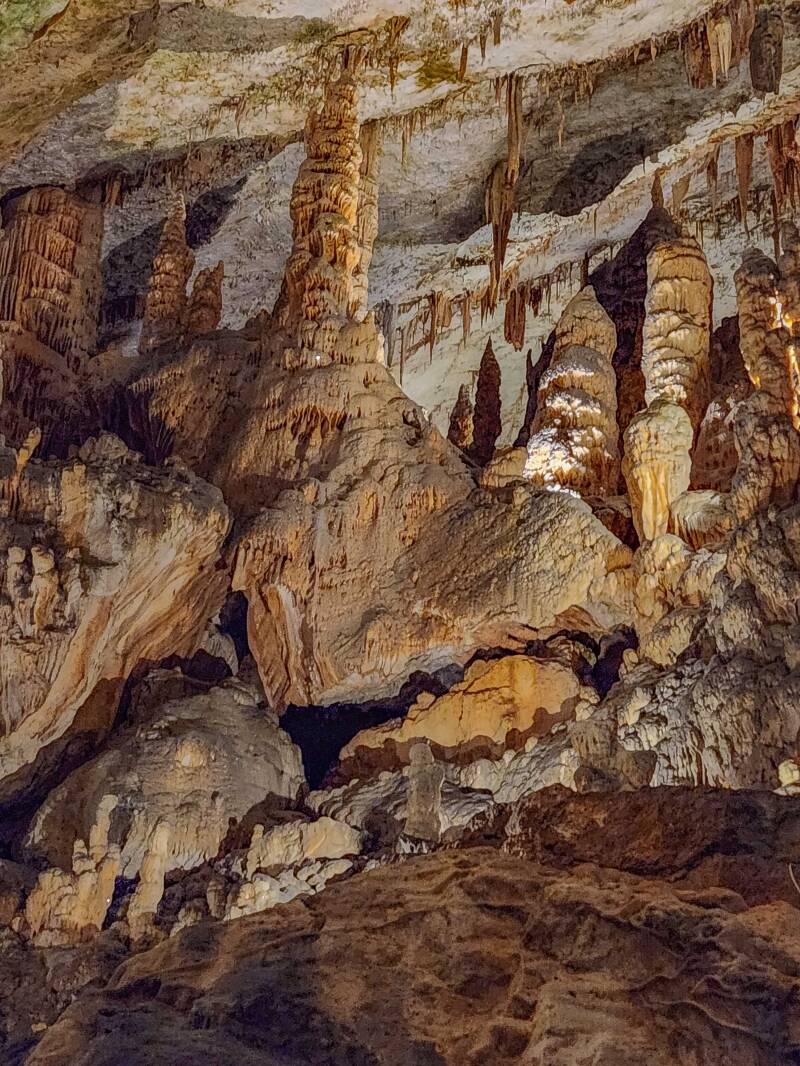
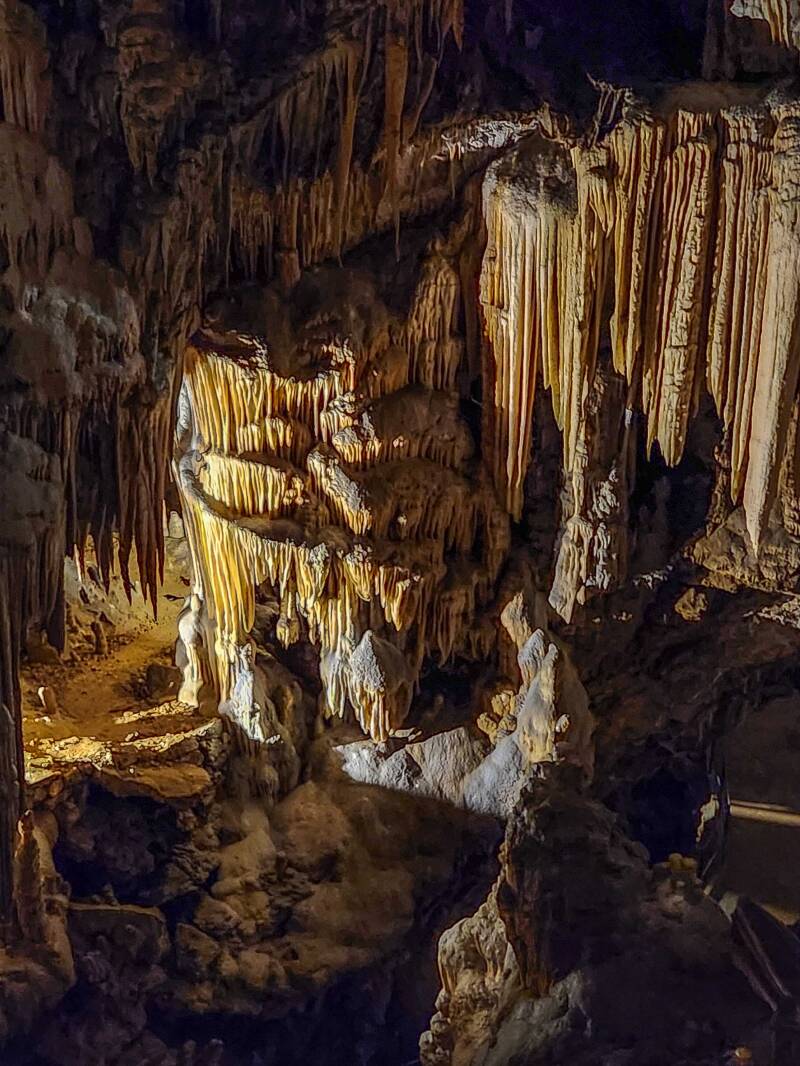
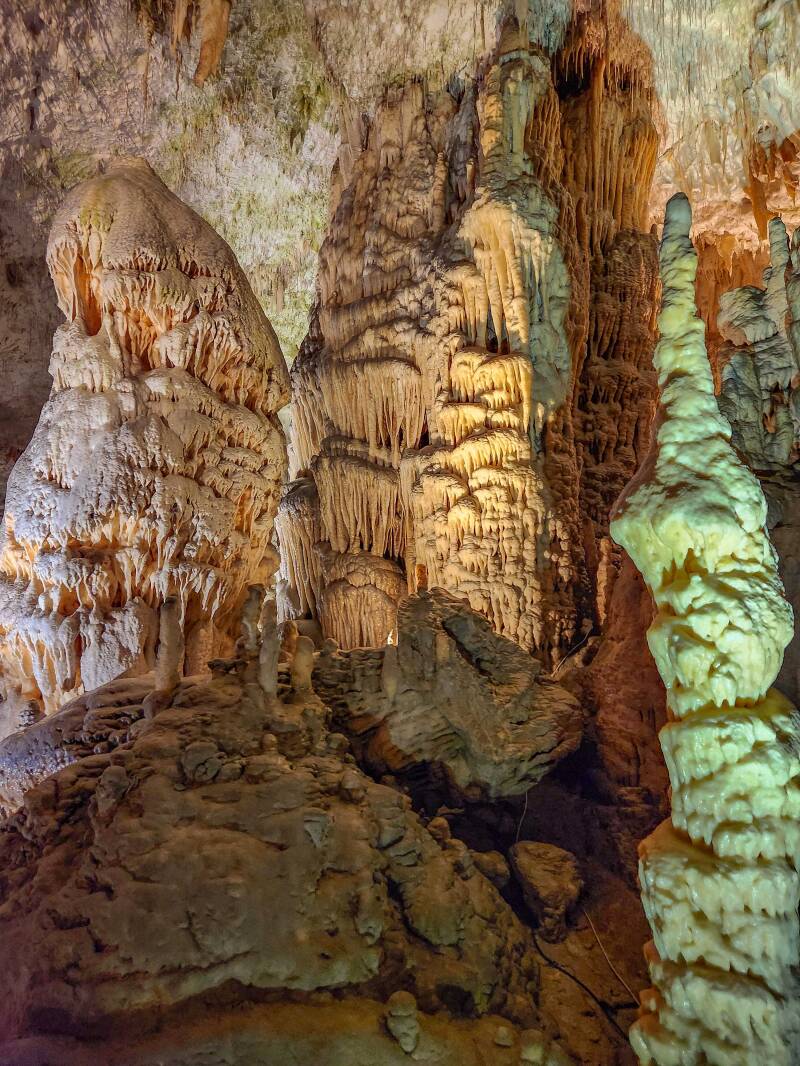
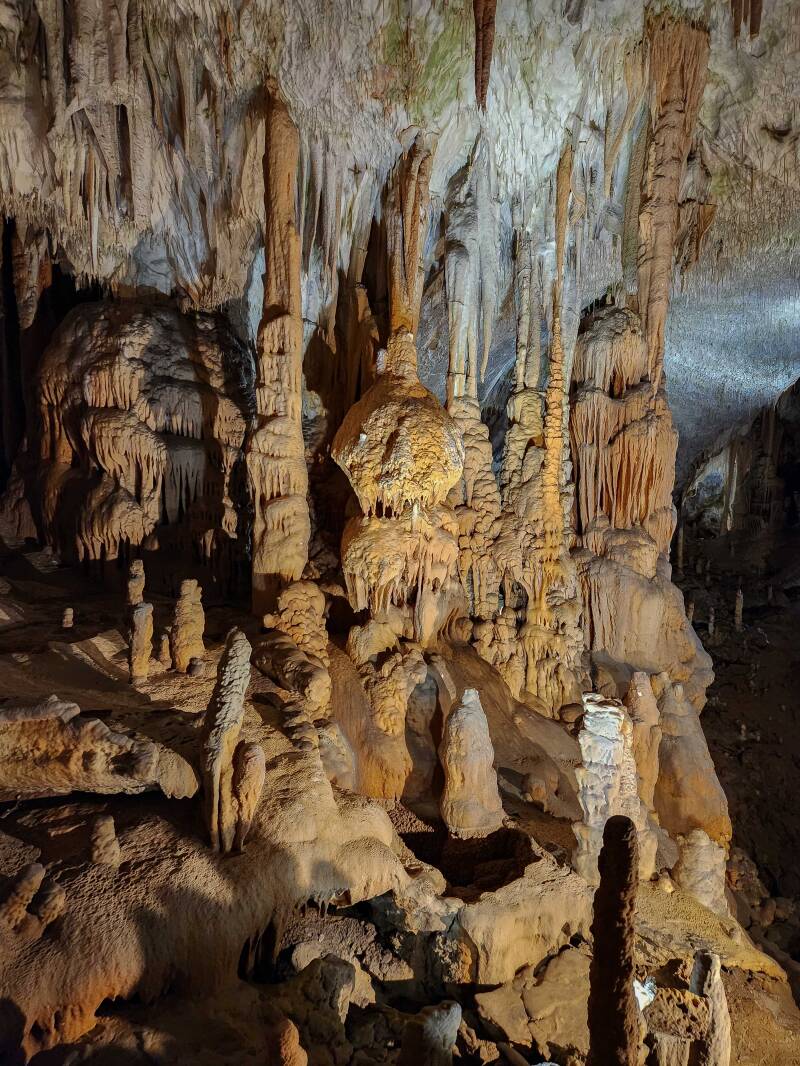

Predjama Castle
A Medieval castle built within a cave mouth located 5 miles from Postojna Cave. The Slovanian word for cave is jama. The castle was built in the 1200's and has been added to and remodeled frequently. Throughout the years the castle has been family owned. Predjama Castle was confiscated and nationalized by the Yugoslav Communist authorities and turned into a museum.



Many of the castle walls are actually part of the cave wall, and the living areas are nicely modern.
This is the end of the Slovenia tour. I hope the photos give you a preview of what this beautiful republic is like, and make it no longer an unknown country.
If you have time and want a relaxing musical journey to Slovenia, visit this you tube posting:
https://www.youtube.com/watch?v=koHbfzwLGC8